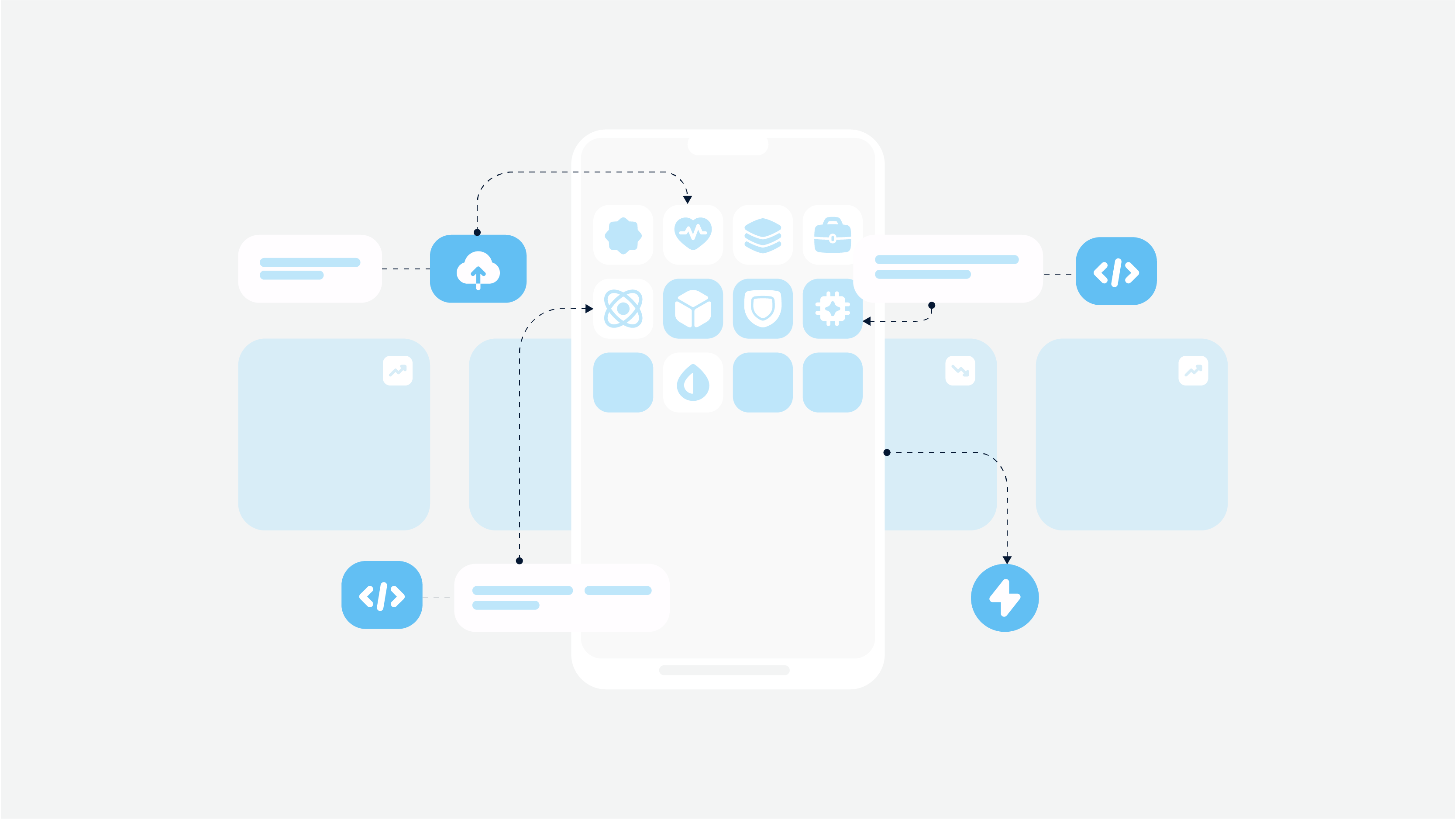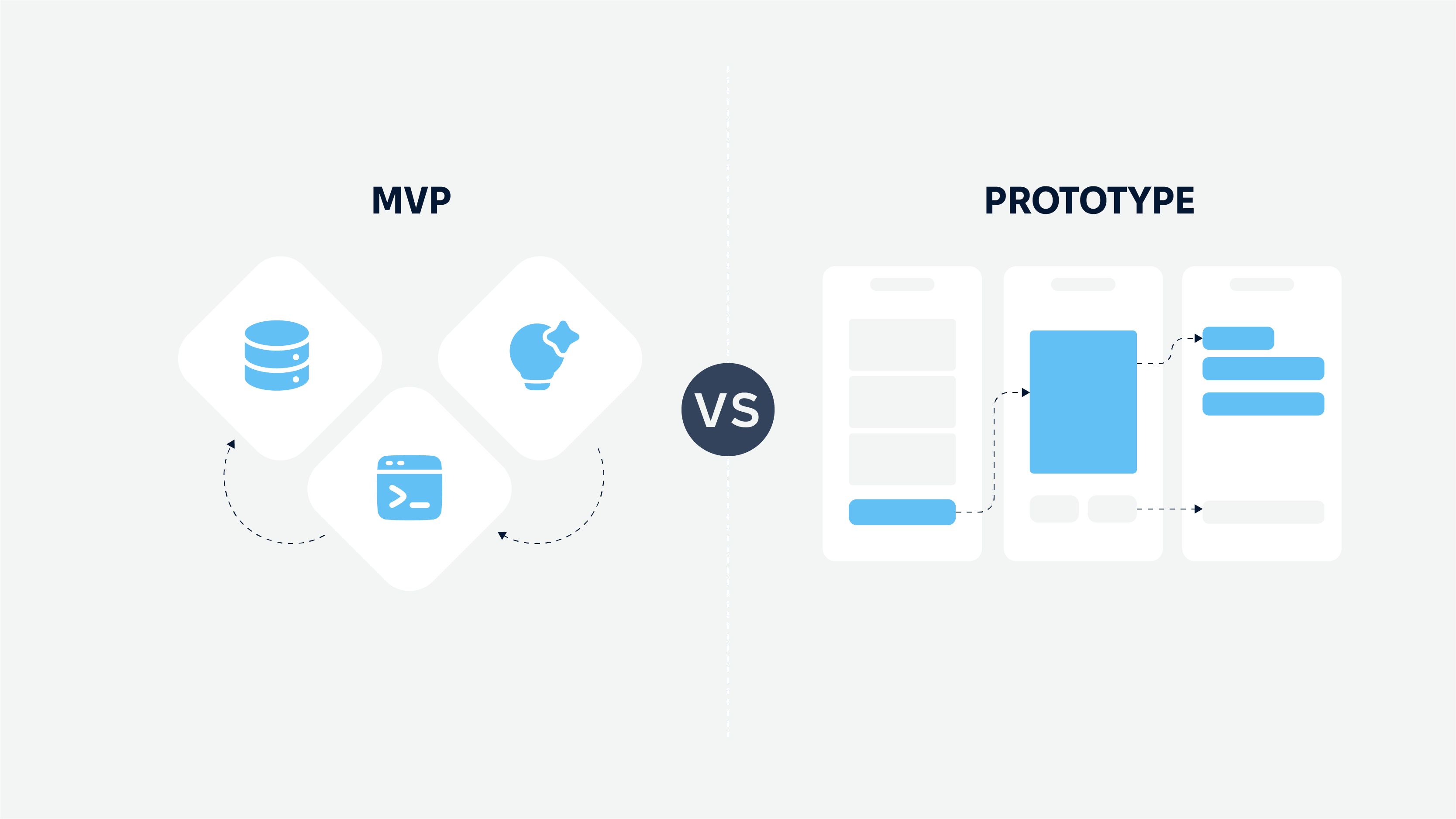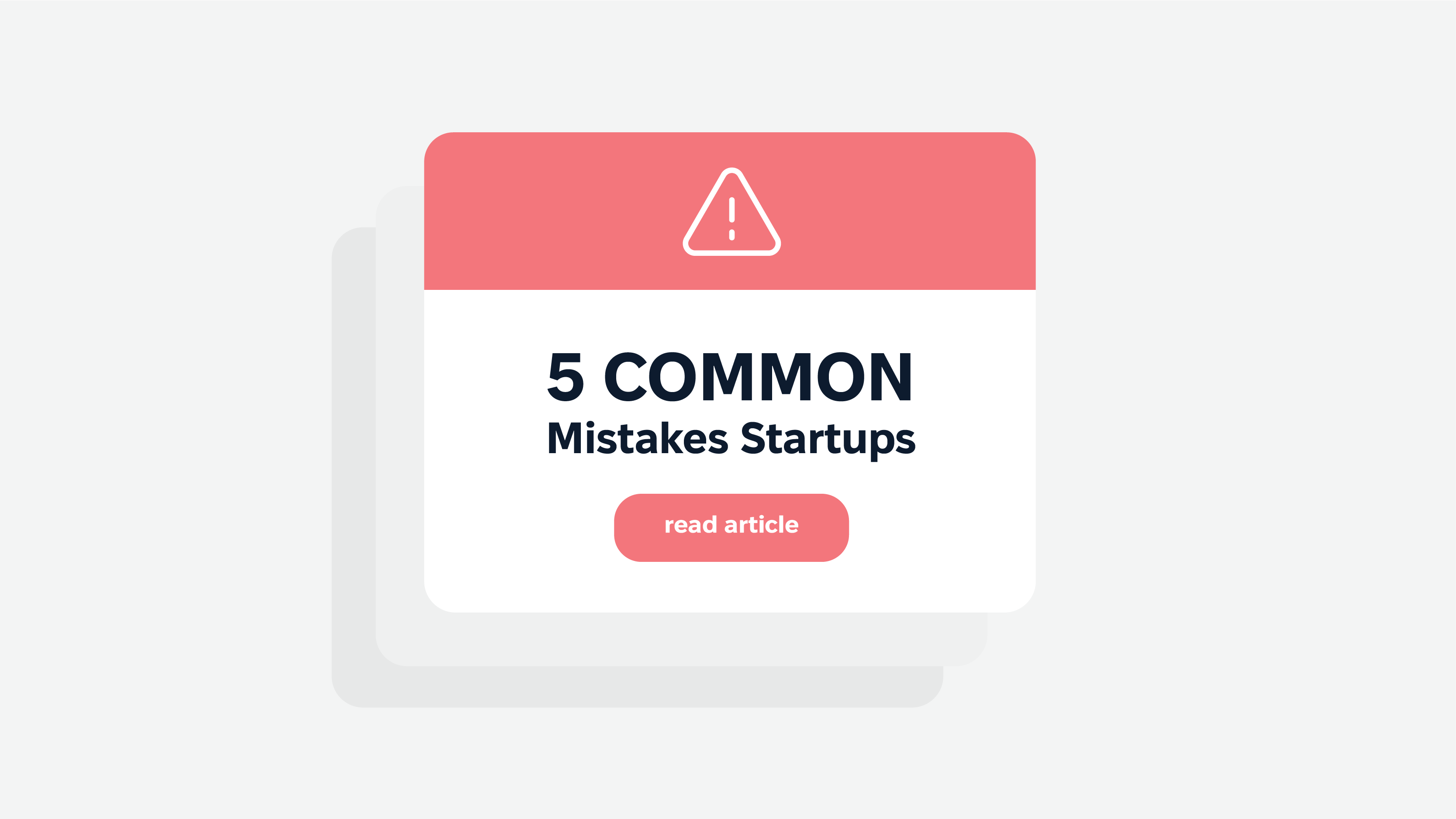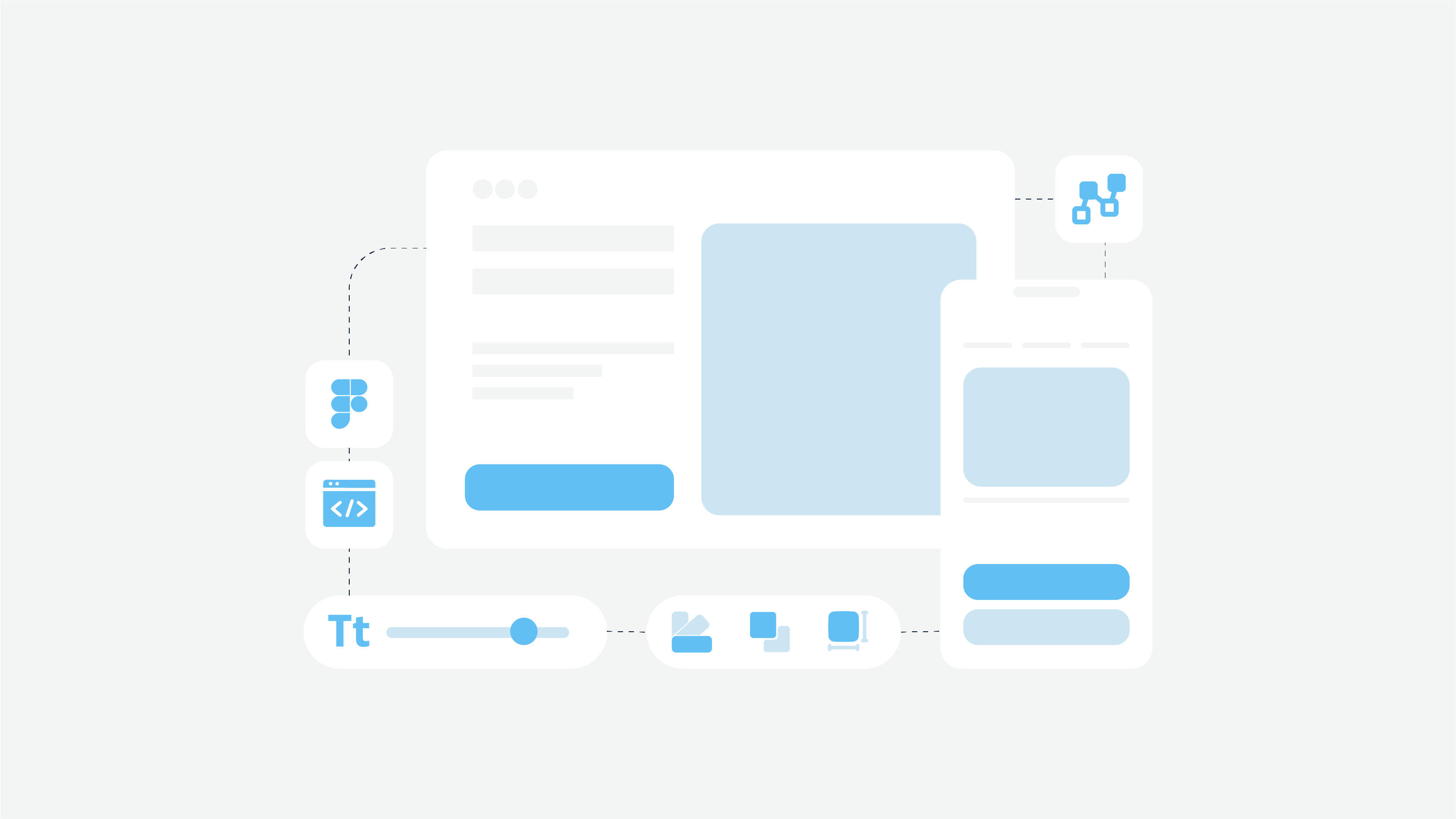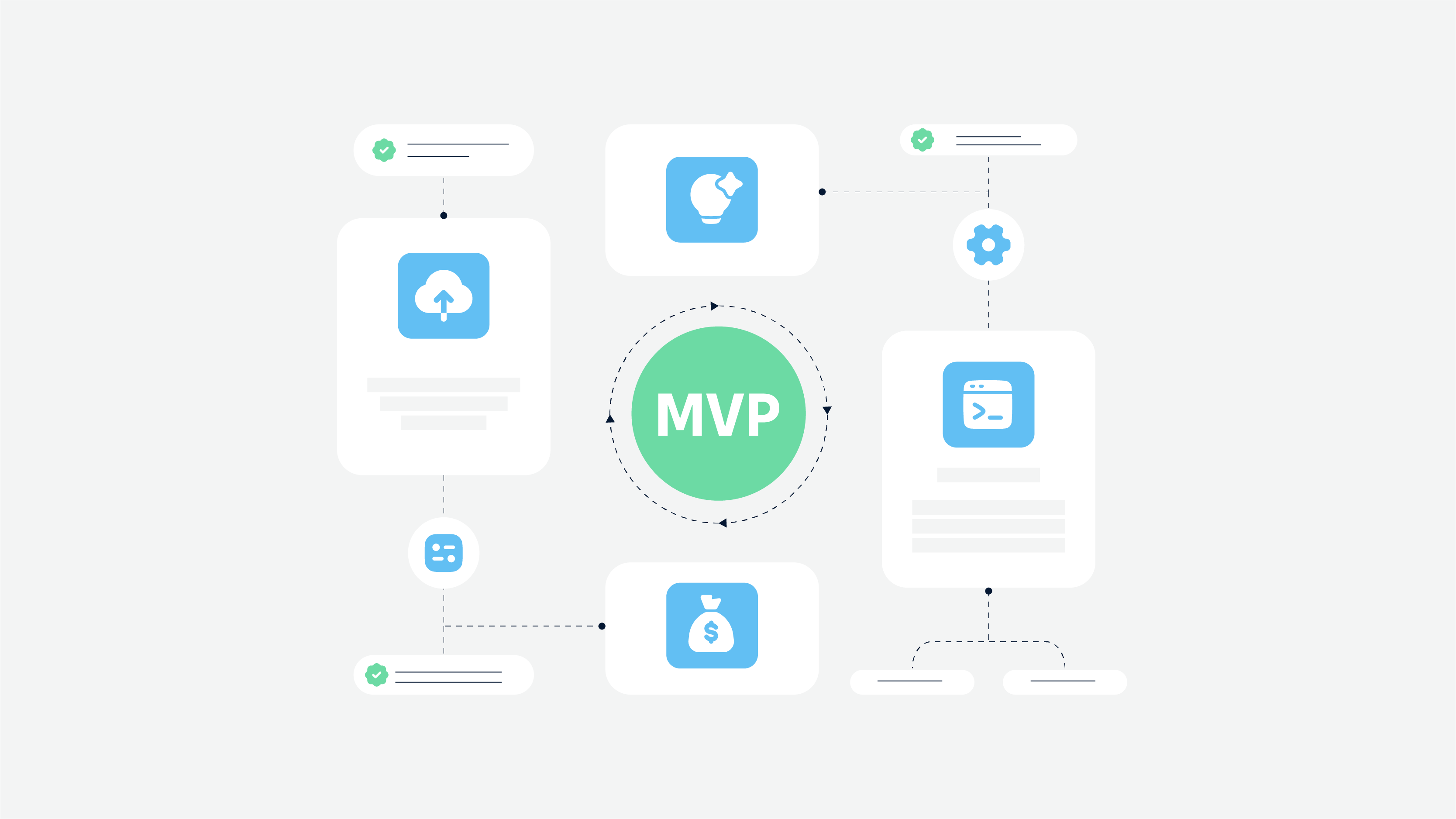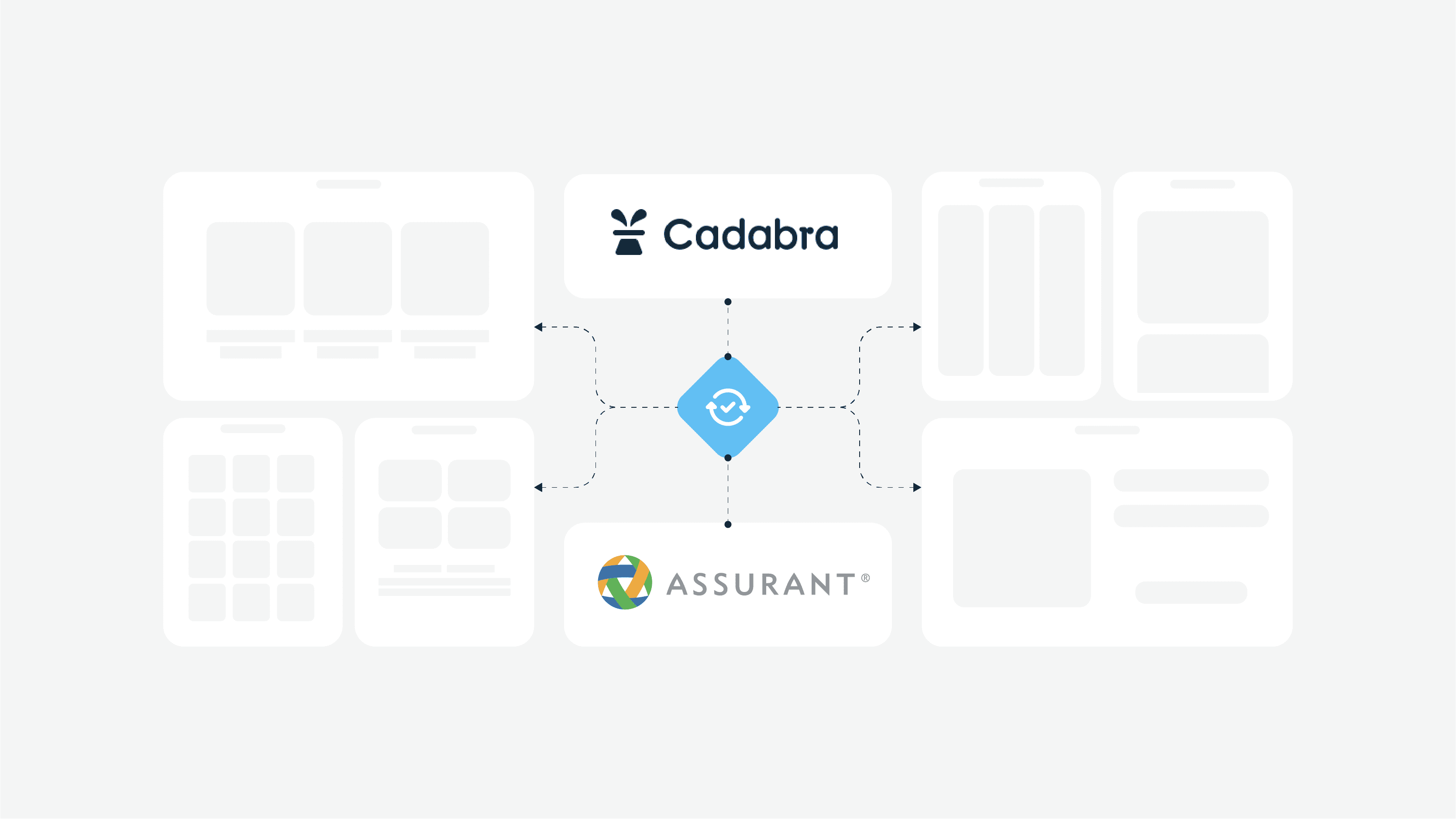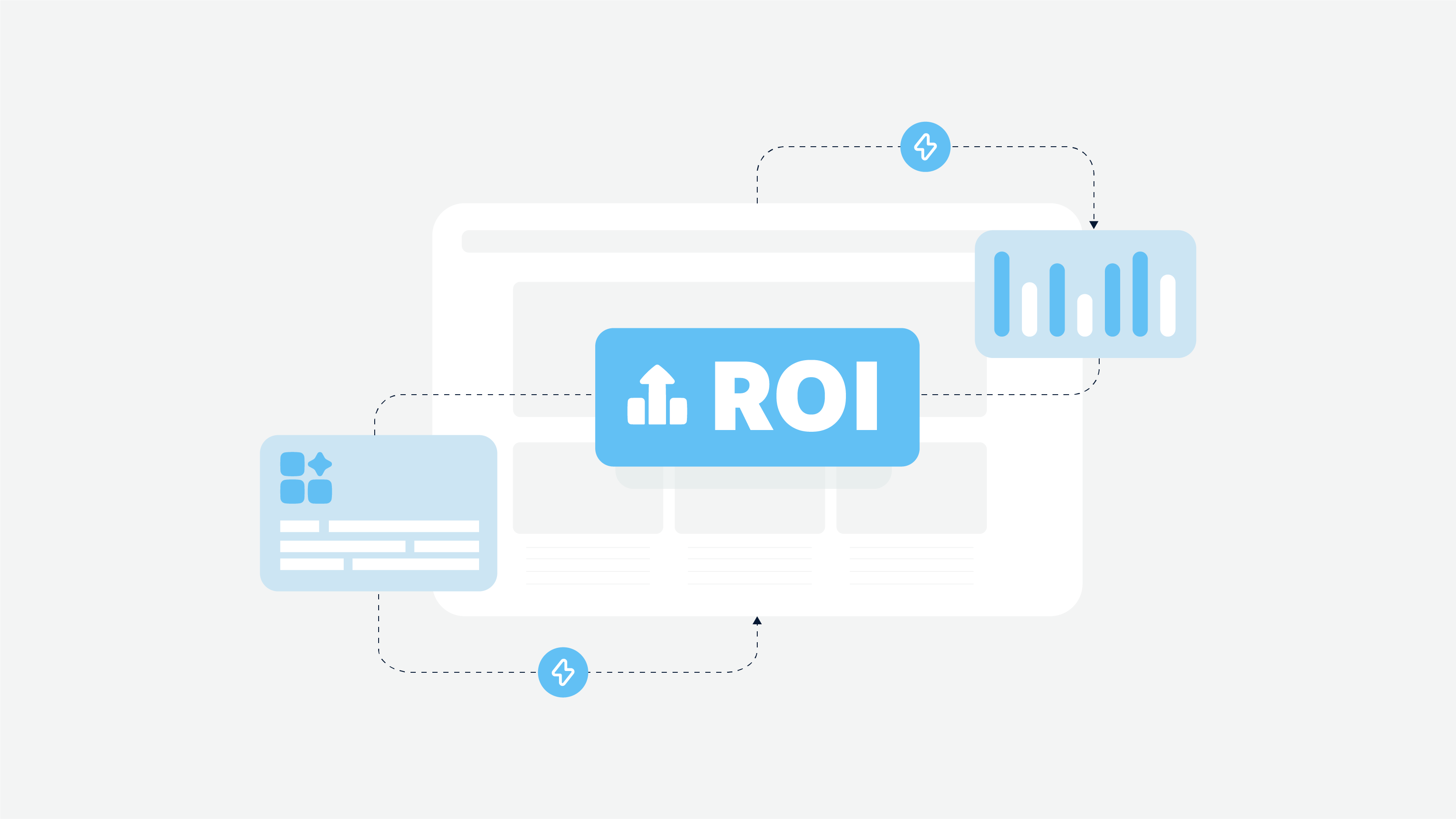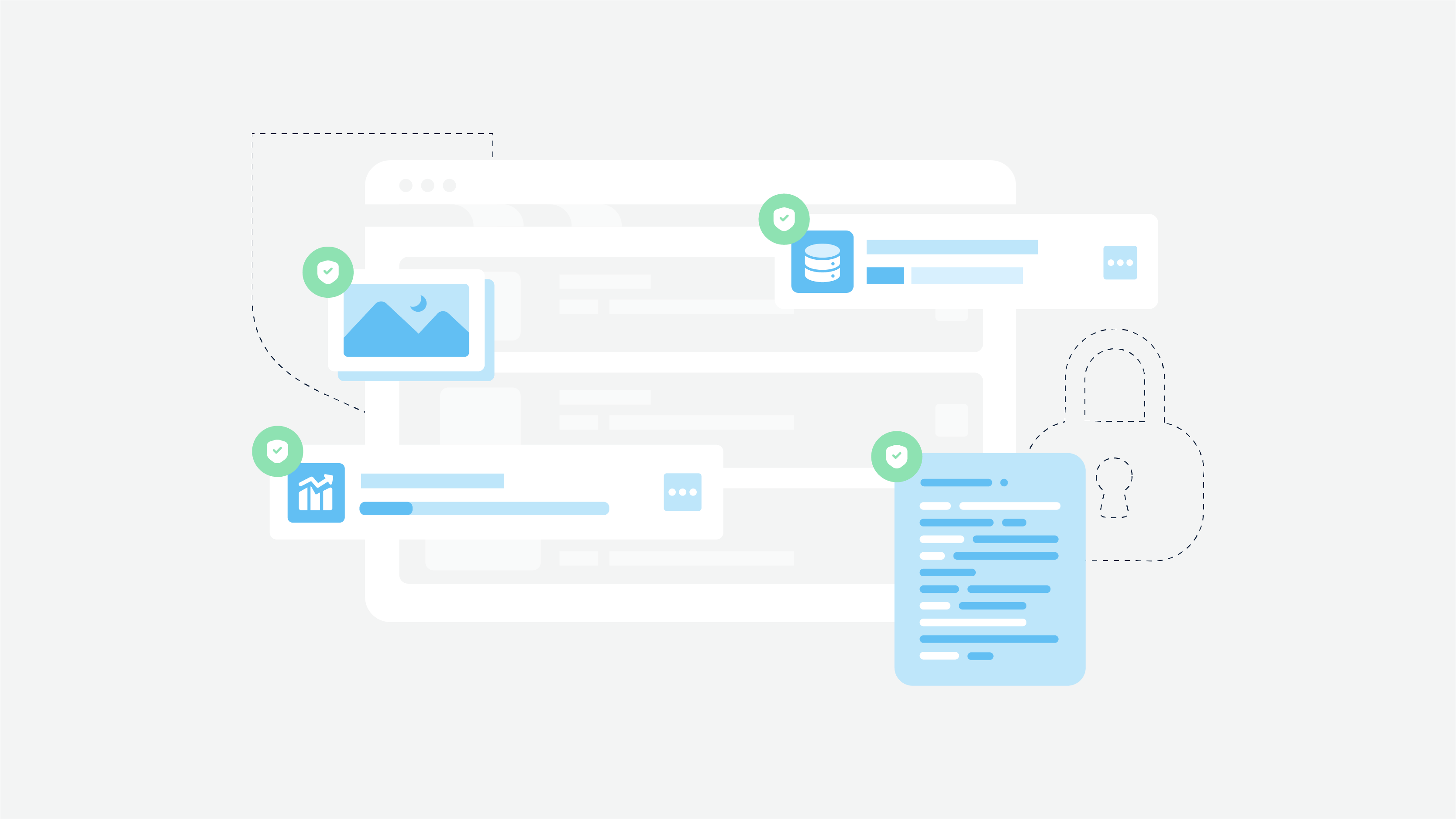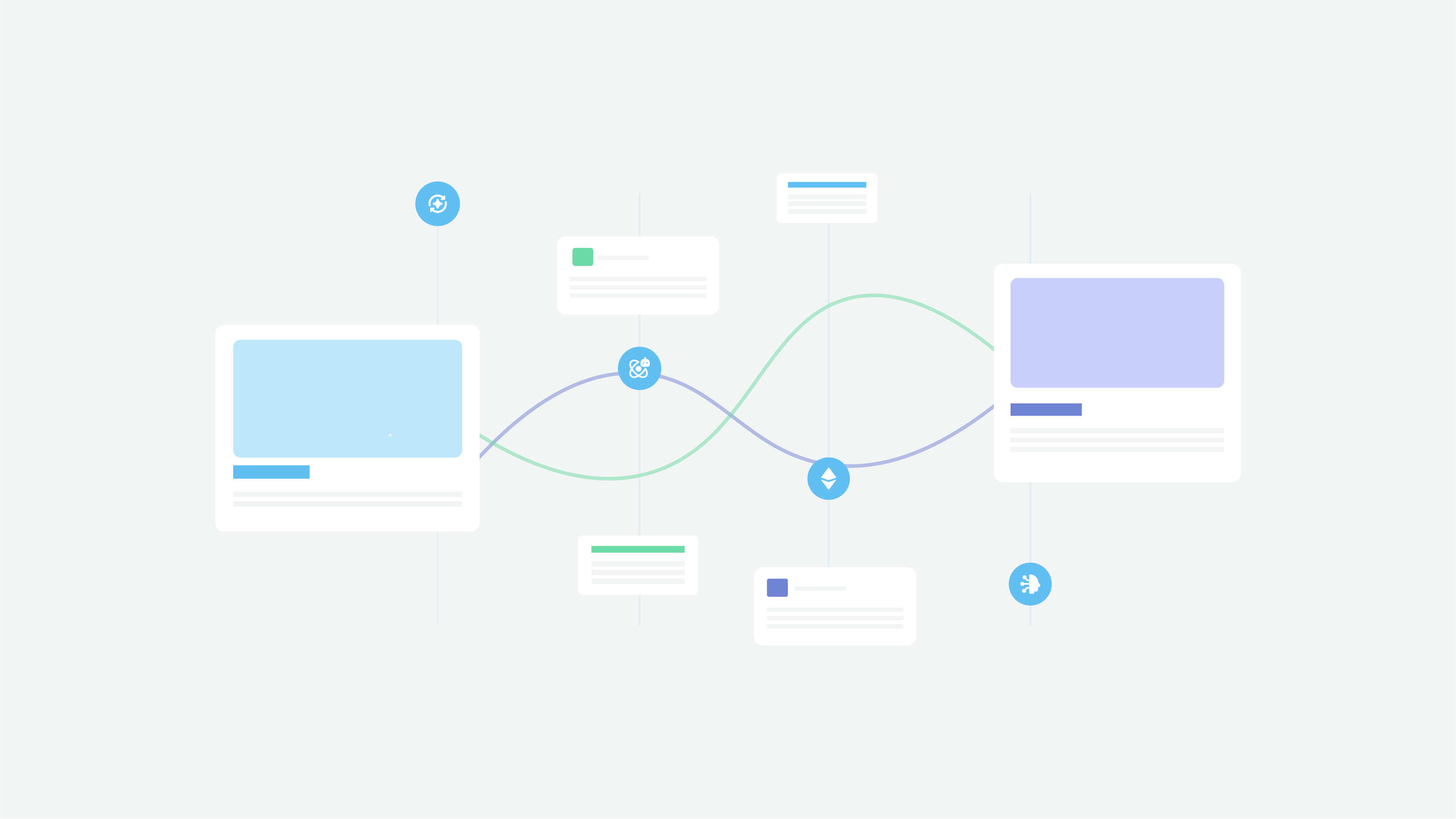Enterprise app development goes beyond just building software—it’s what keeps businesses from drowning in spreadsheet chaos. Picture a company where everything is done manually, data is scattered across a dozen platforms, and people are stuck in never-ending email chains just to get things done.
Sounds exhausting, right? That’s where enterprise apps come in, making work smoother, faster, and way less frustrating.
In this article, we’ll dive into the biggest shifts in enterprise app and mobile application development trends, share real success stories, and give you practical tips to help your business stay ahead. Let’s jump in!
What Is Enterprise App Development?
Enterprise app development is all about creating software tailored for big businesses. These apps need to handle large amounts of data, integrate with their multiple platforms and systems, and stay secure while being easy to use. With more companies going digital, enterprise apps help streamline operations and improve decision-making.
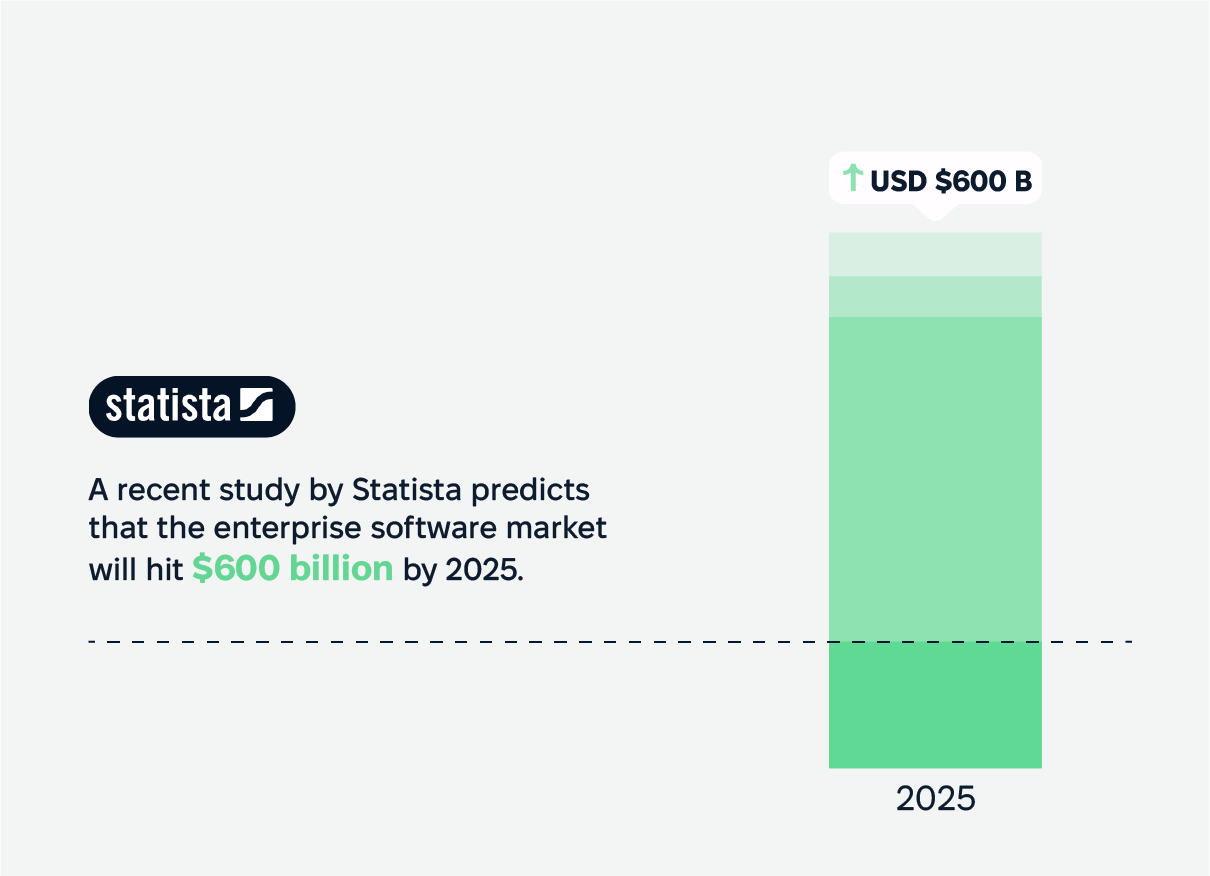
A recent study by Statista predicts that the enterprise software market will hit $600 billion by 2025. With companies investing more in automation, AI, and cloud-based solutions, the demand for enterprise apps is skyrocketing.
Why Enterprise Apps Are Essential for Businesses
Enterprise apps are like the secret sauce that keeps a company running smoothly. Without them, businesses would be drowning in spreadsheets, clunky software, and an avalanche of emails—like trying to run a marathon with your shoelaces tied together. These apps step in to bring order to the chaos by automating tasks, organizing data, and making everything work like a well-oiled machine.
Boosting Efficiency and Reducing Costs
Time is money, and nobody wants to waste either. Enterprise apps take over the boring, repetitive tasks—like entering data, handling invoices, and answering customer inquiries—so employees can focus on the stuff that really matters. Less manual work means fewer mistakes, lower costs, and way more productivity.
Real-life examples:
Epic helps hospitals and clinics manage electronic health records (EHR). It takes care of patient data, scheduling, and billing—cutting down on admin work and making healthcare more efficient.
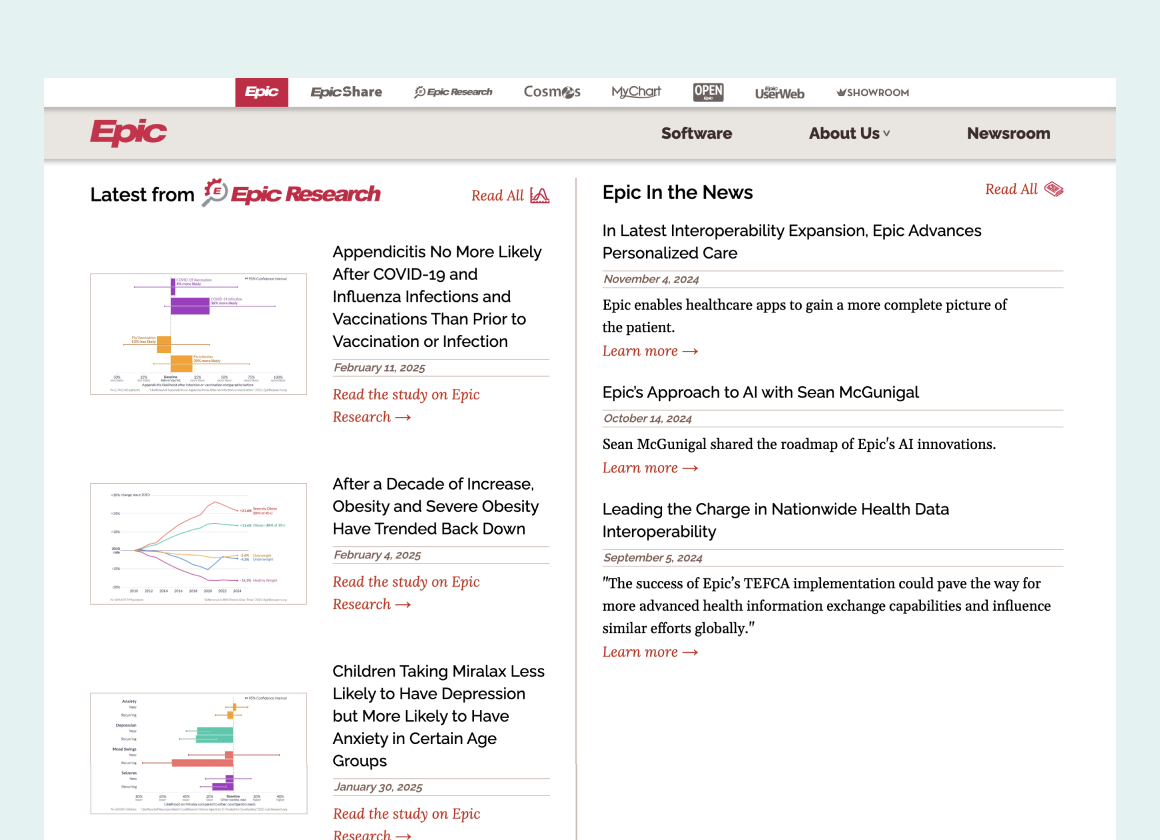
SAP S/4HANA streamlines operations by bringing financial management, supply chain logistics, and HR functions into one system. Big corporations love it because it saves time and slashes costs.
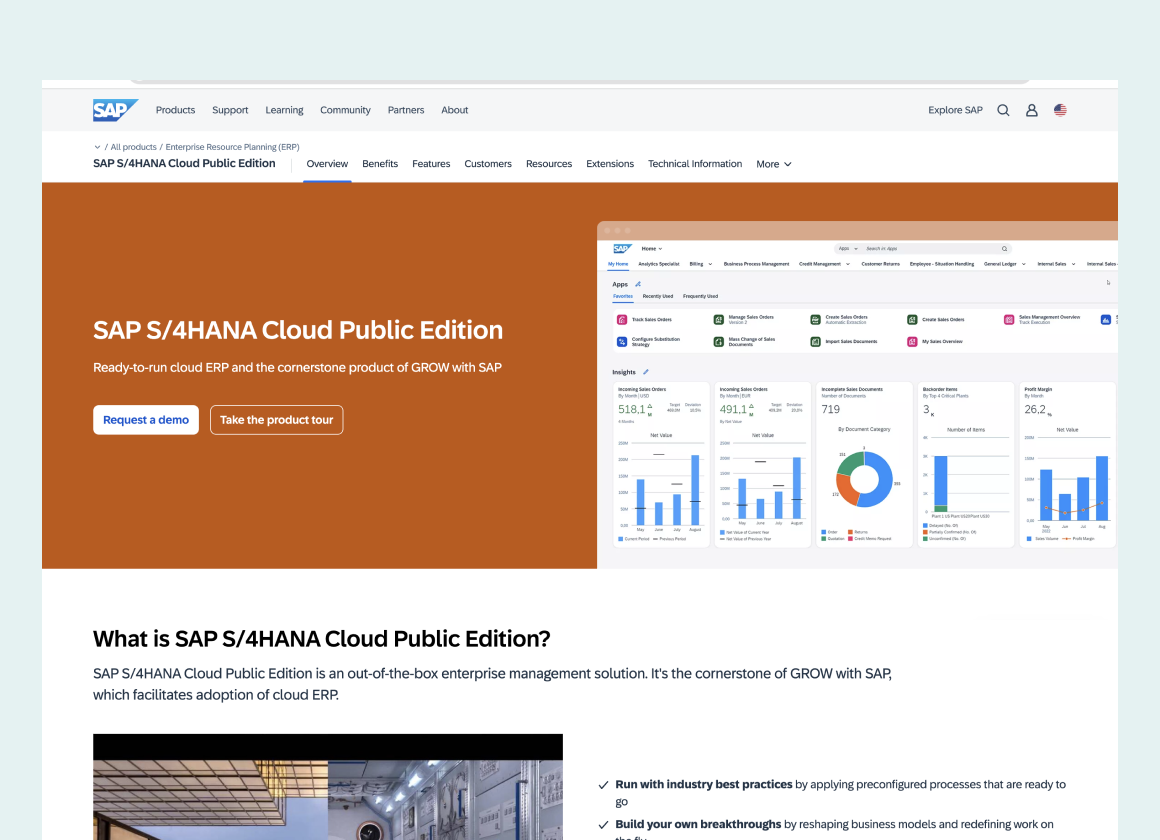
Enhancing Decision-Making with AI and Analytics
Making decisions without real-time data is like throwing darts in the dark. Enterprise apps powered by AI turn raw numbers into game-changing insights. Instead of spending weeks digging through spreadsheets, businesses get instant reports and predictions, helping them stay ahead of the curve.
Real-life examples:
Seamless Collaboration Across Teams and Locations
IBM Watson analyzes massive amounts of medical data to help doctors diagnose diseases faster and more accurately. Hospitals rely on it to improve patient care and speed up decision-making.
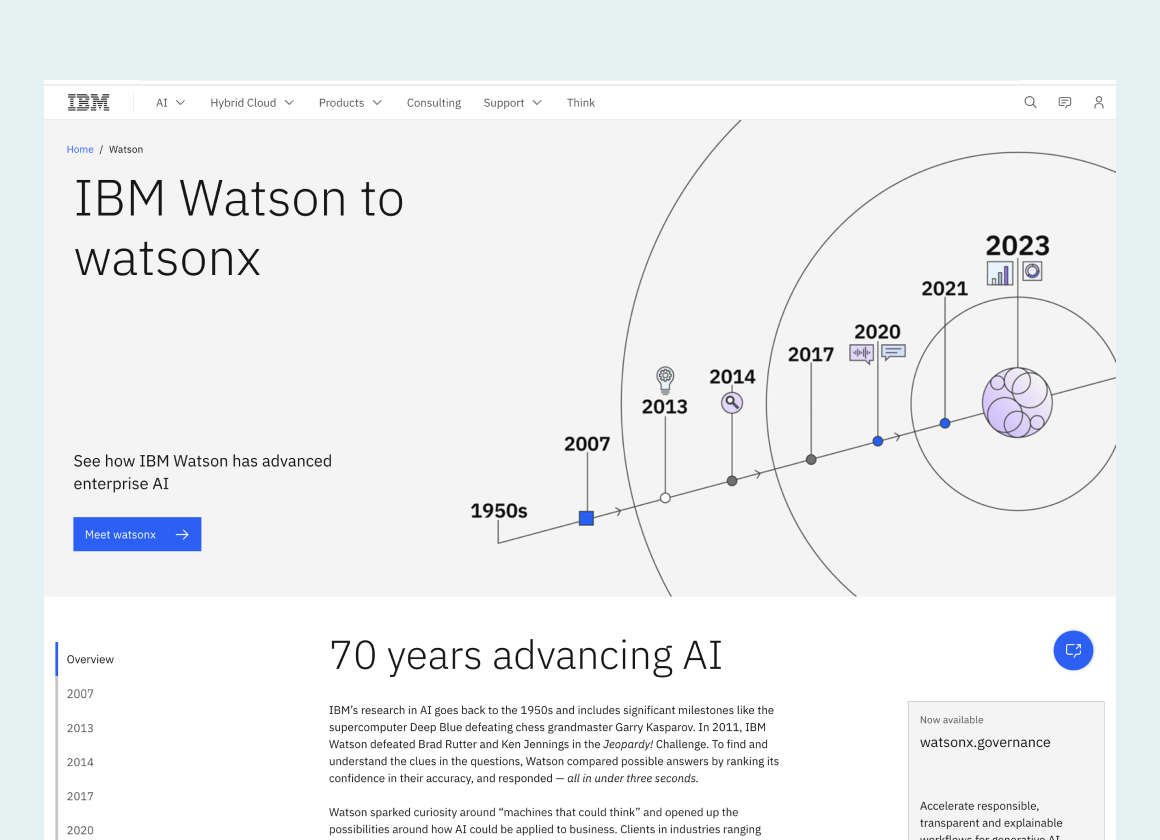
Bloomberg Terminal is a go-to tool for traders and financial analysts, delivering real-time market data so they can make smarter investment choices in seconds.
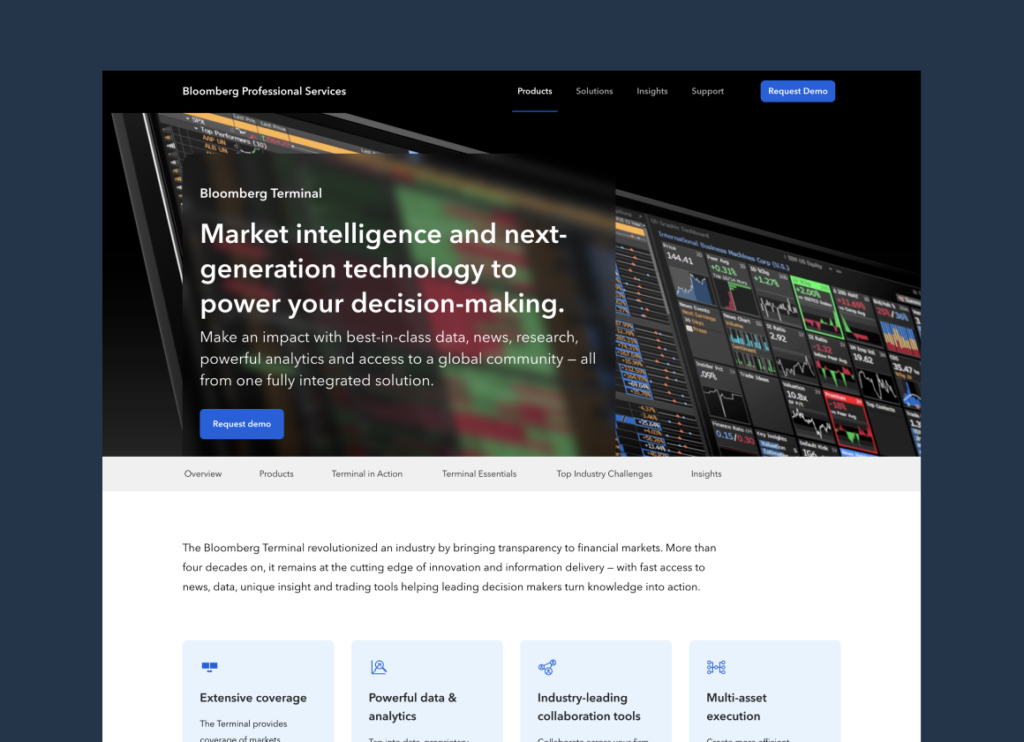
With remote and hybrid work becoming the norm, businesses need tools that keep teams connected—without the endless email chains and misplaced files. Cloud-based enterprise apps make it easy for employees to access documents, share updates, and collaborate in real time, no matter where they are.
Real-life examples:
Microsoft 365 gives teams access to tools like Teams, SharePoint, and OneDrive, making it super easy to share files and communicate—whether you’re in the office or working from a beach.
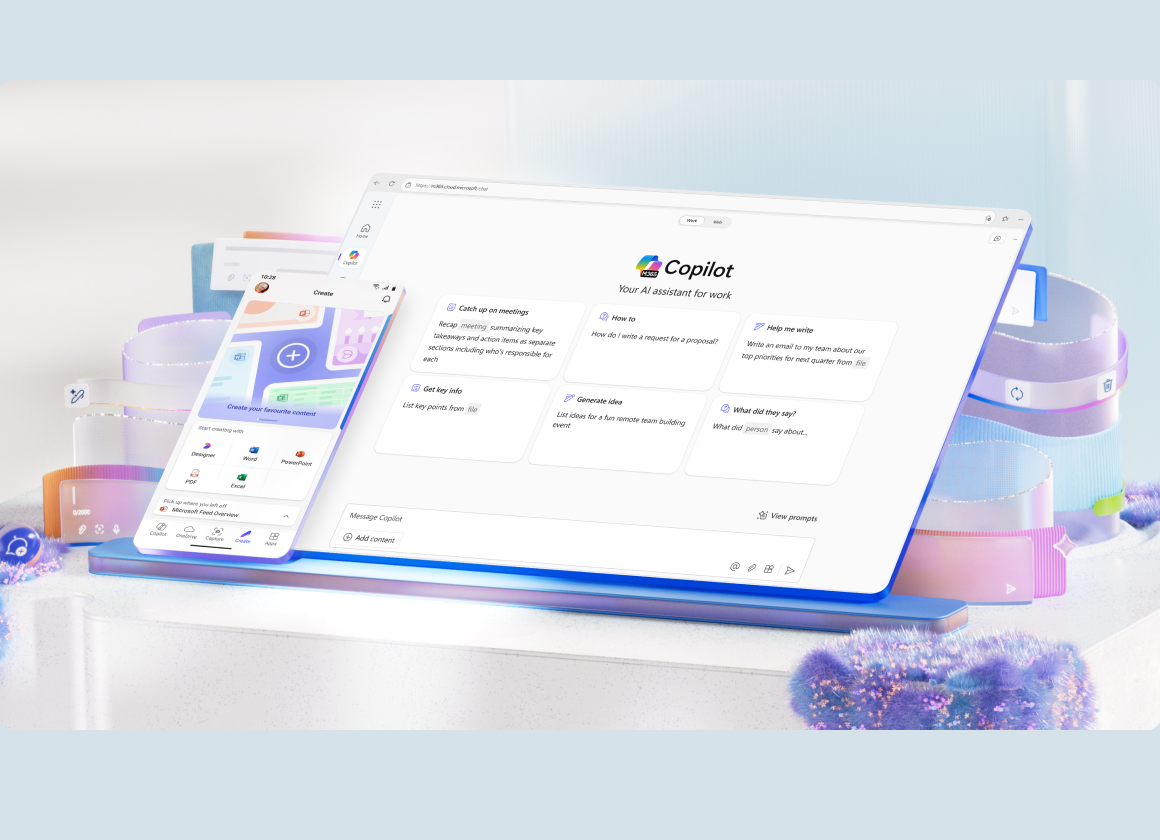
Slack transformed workplace communication with a centralized messaging platform that integrates with popular business tools like Jira, Salesforce, and Google Drive.
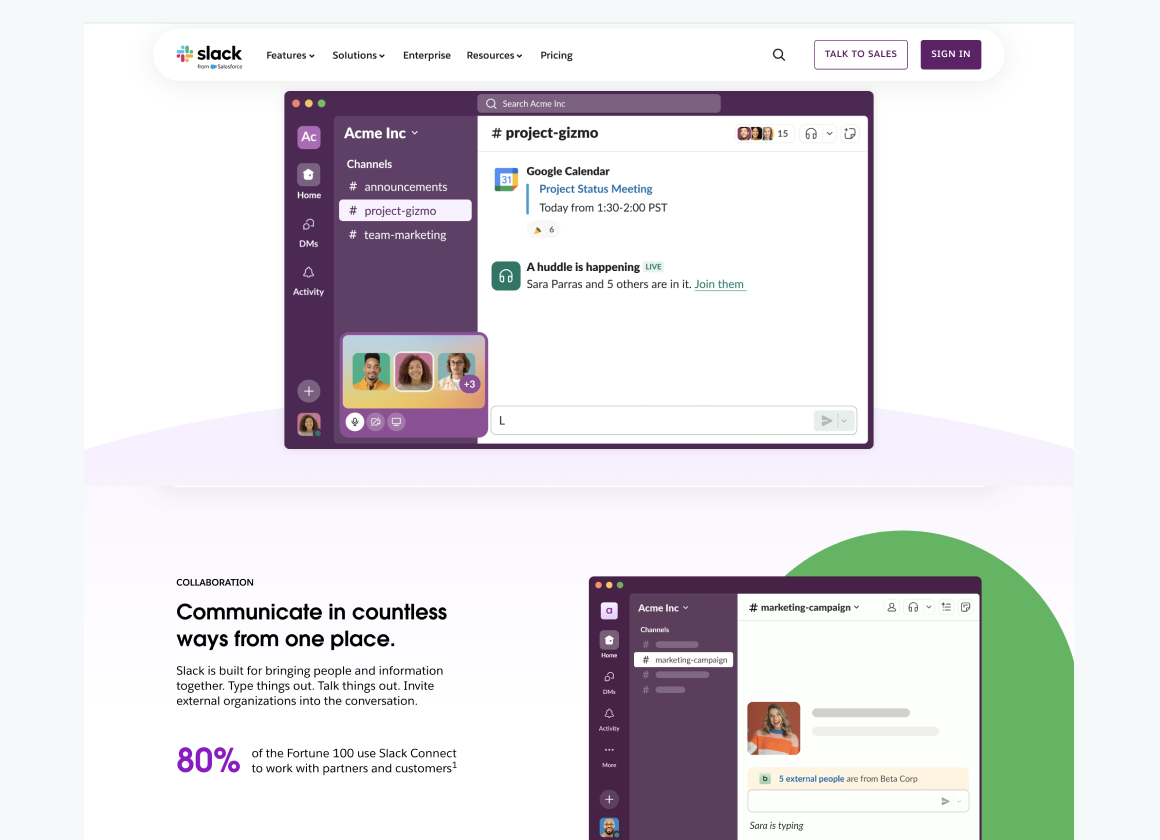
Strengthening Security and Compliance
Cyber threats are lurking around every corner, and one weak spot can bring a business to its knees. Enterprise apps come with top-notch security features like multi-factor authentication and encryption, ensuring that sensitive business data stays locked down. Plus, they help companies stay compliant with strict regulations like GDPR and HIPAA.
Real-life examples:
Okta helps banks and hospitals control who can access their systems, adding an extra layer of security and ensuring compliance with industry regulations.
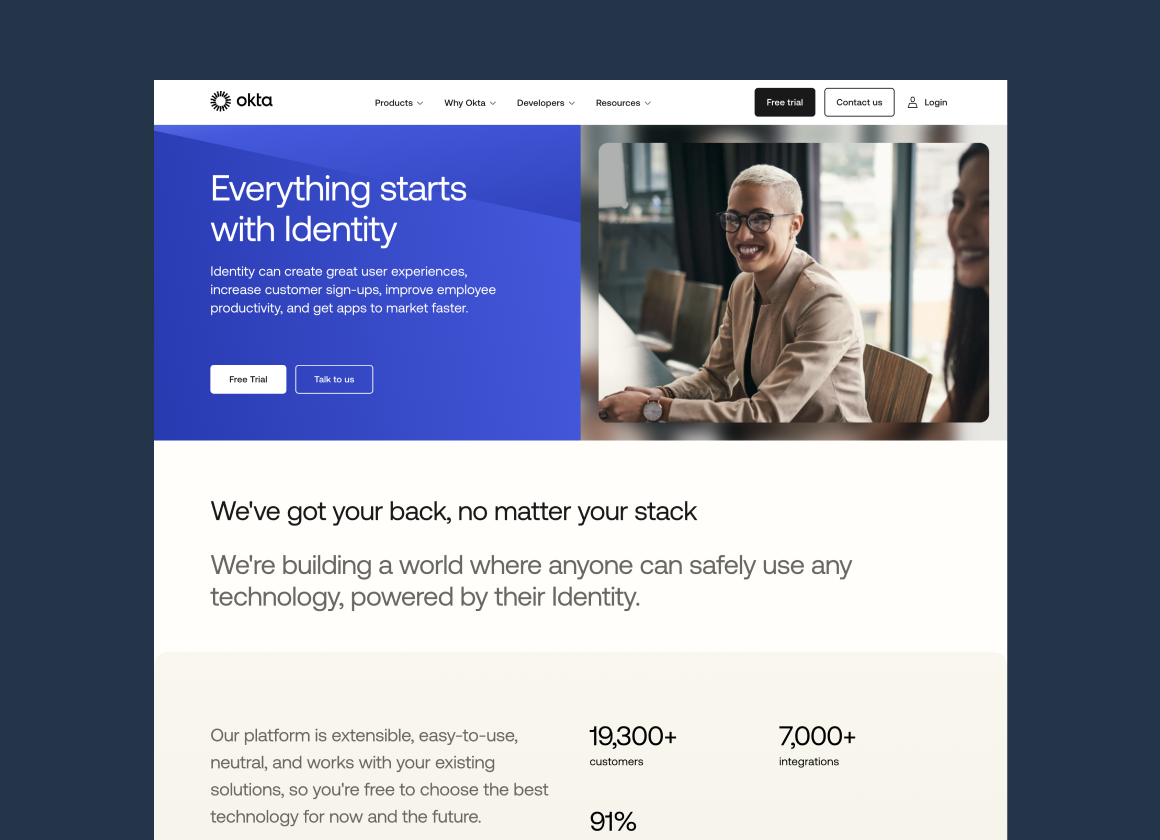
Veeva Systems is a lifesaver for pharmaceutical companies, helping them manage clinical trials and follow strict compliance rules without breaking a sweat.
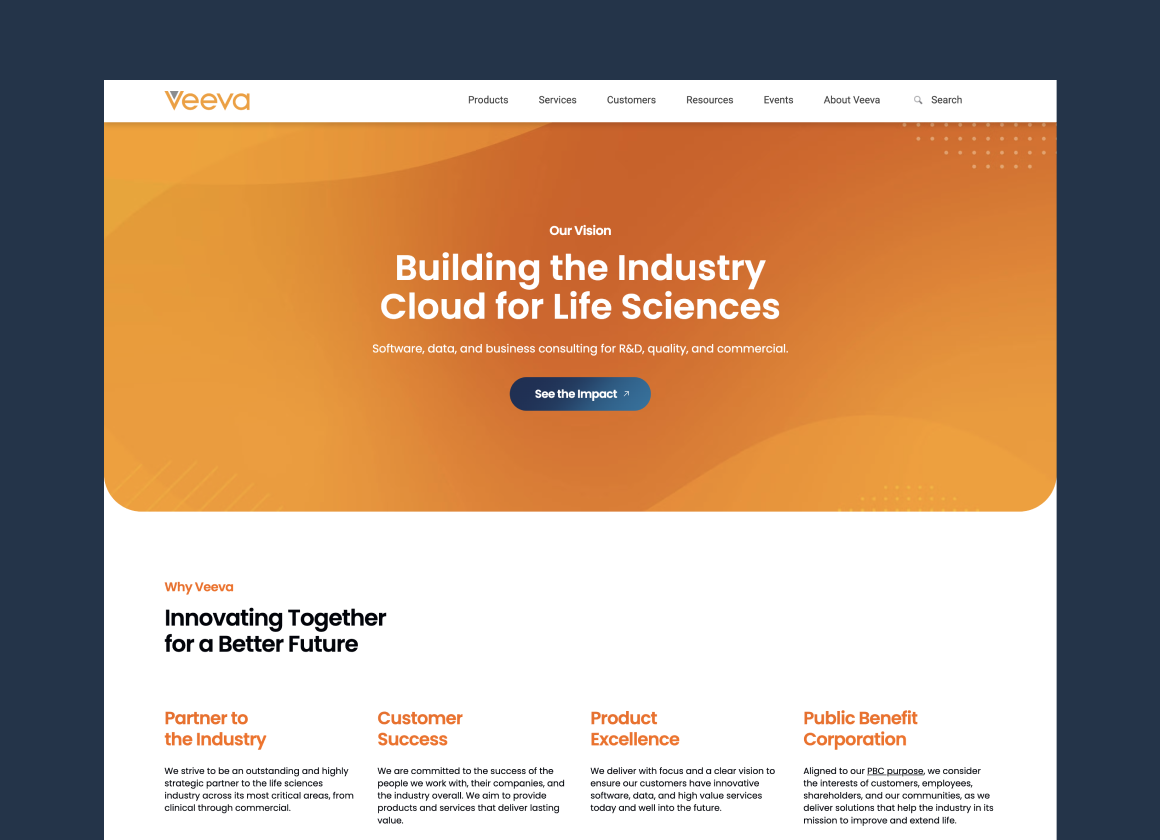
Scaling with Business Growth
As businesses grow, their technology needs to grow with them. Especially in the mobile app development industry.
Enterprise apps are built to scale, whether it’s handling more users, integrating with new tools, or adapting to a bigger business model. No more outgrowing outdated systems—these solutions evolve right alongside the company.
Real-life examples:
Salesforce is a CRM powerhouse that helps businesses—big or small—manage customer relationships and scale effortlessly with customizable solutions and cloud computing.
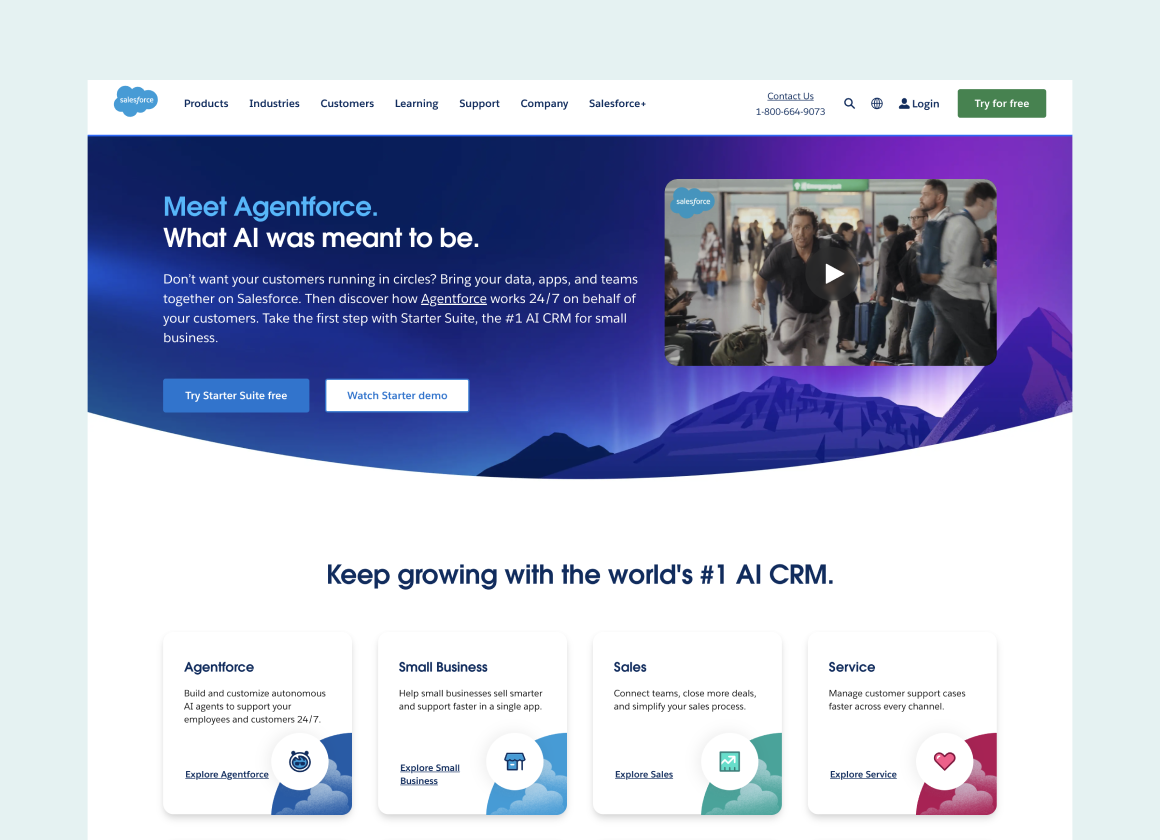
Stripe makes it easy for businesses to process mobile payments more securely, whether they’re a small startup or a global brand looking to expand. It is very easy to use on mobile devices.
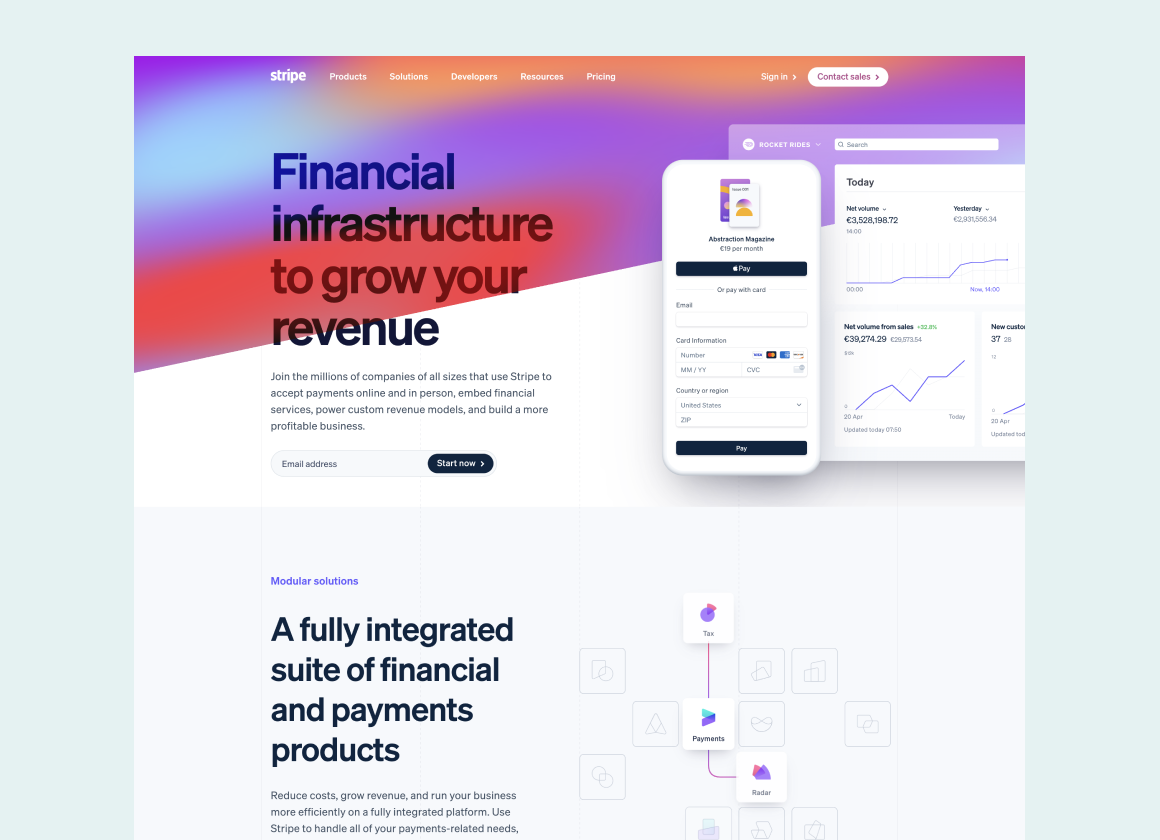
Need expert assistance in creating an enterprise app? Don’t know where to start? We’re here to help.
Current Trends in Mobile App Development for Enterprises
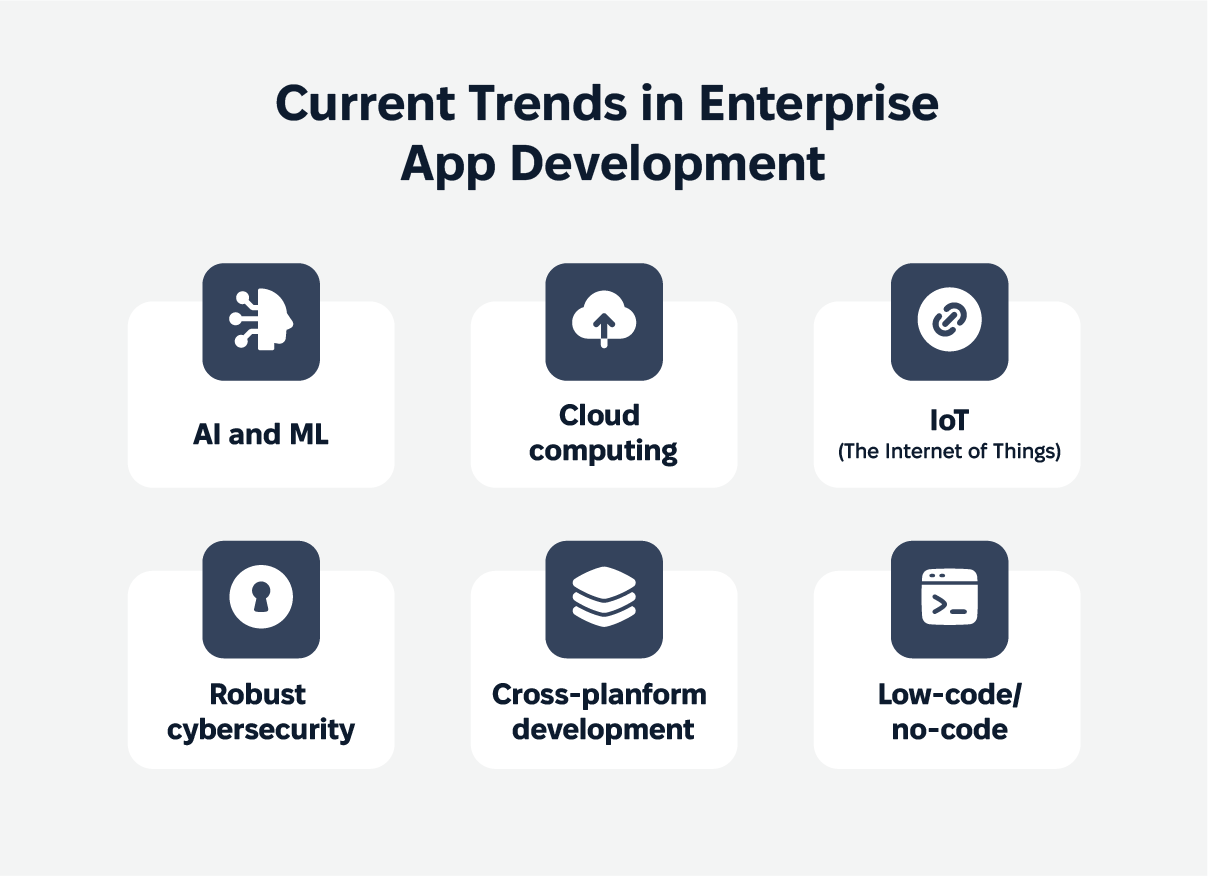
Enterprise app development is moving fast—blink, and you might miss the next big thing in mobile app trends. Businesses are constantly upgrading their tech to stay ahead, and the latest trends are all about making apps smarter, faster, and more secure. Let’s break down the game-changers shaping mobile app industry trends and the future of enterprise apps.
1. AI and Machine Learning: Smarter Apps, Better Results
AI and machine learning transform how businesses operate. Itis used for predicting customer behavior, working with technologies such as virtual reality, and automating time-consuming tasks. AI-driven apps and artificial intelligence are turning businesses into well-oiled machines.
In 2024, 85% of enterprises reported that AI-powered apps significantly boosted productivity.
Real-world impact:
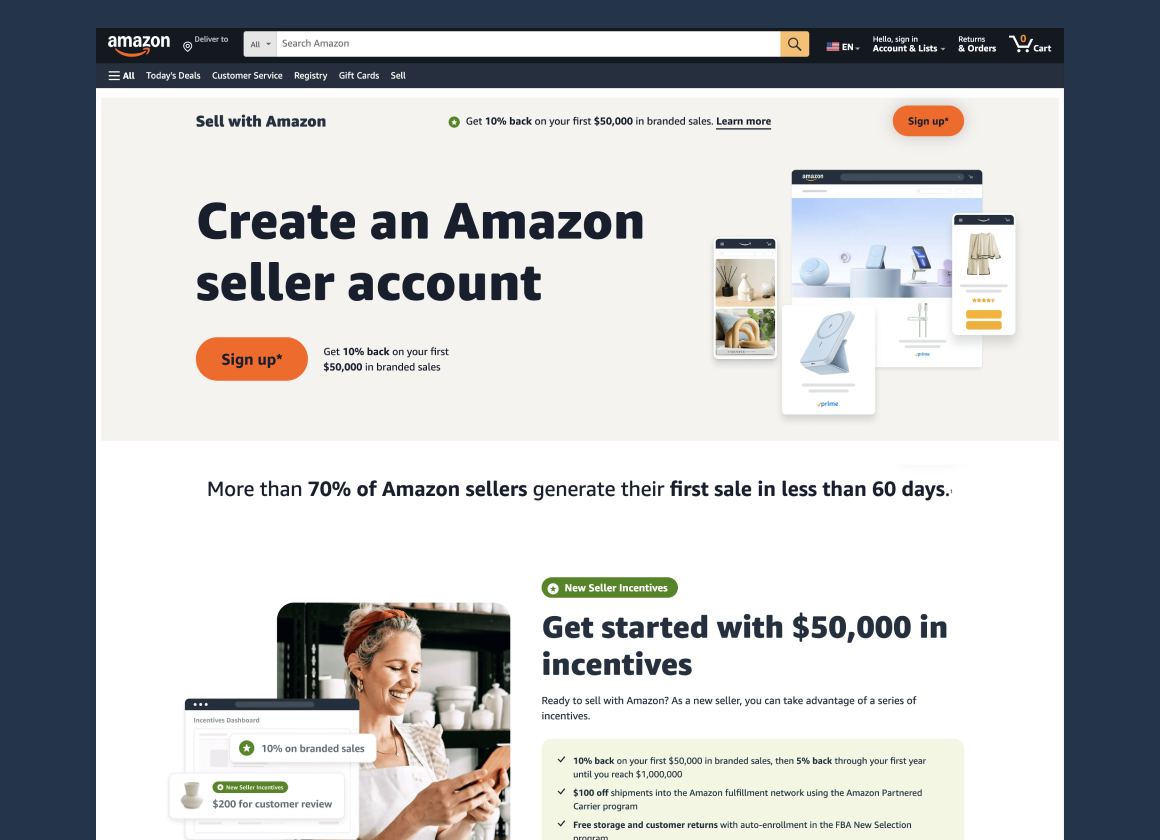
Amazon uses AI to personalize shopping recommendations, keeping customers engaged. AI chatbots like ChatGPT handle millions of customer inquiries daily, reducing response times by 60%.
2. Cloud-Based Development: The Backbone of Modern Apps
If you’re still relying on traditional hosting, you’re swimming against the tide. Cloud technology is no longer an option—it’s the foundation of enterprise app development. Companies using cloud-based apps see 40% faster deployment and save 30% on costs compared to outdated hosting.
Real-world impact:

Netflix runs on AWS cloud services, ensuring seamless, high-quality streaming for millions of users worldwide.
3. IoT Integration: Smarter, More Connected Operations
The Internet of Things (IoT) is reshaping industries by connecting devices and collecting real-time data. It’s a game-changer for logistics, where more than 75% of companies now use IoT for tracking shipments and managing fleets.
Real-world impact:
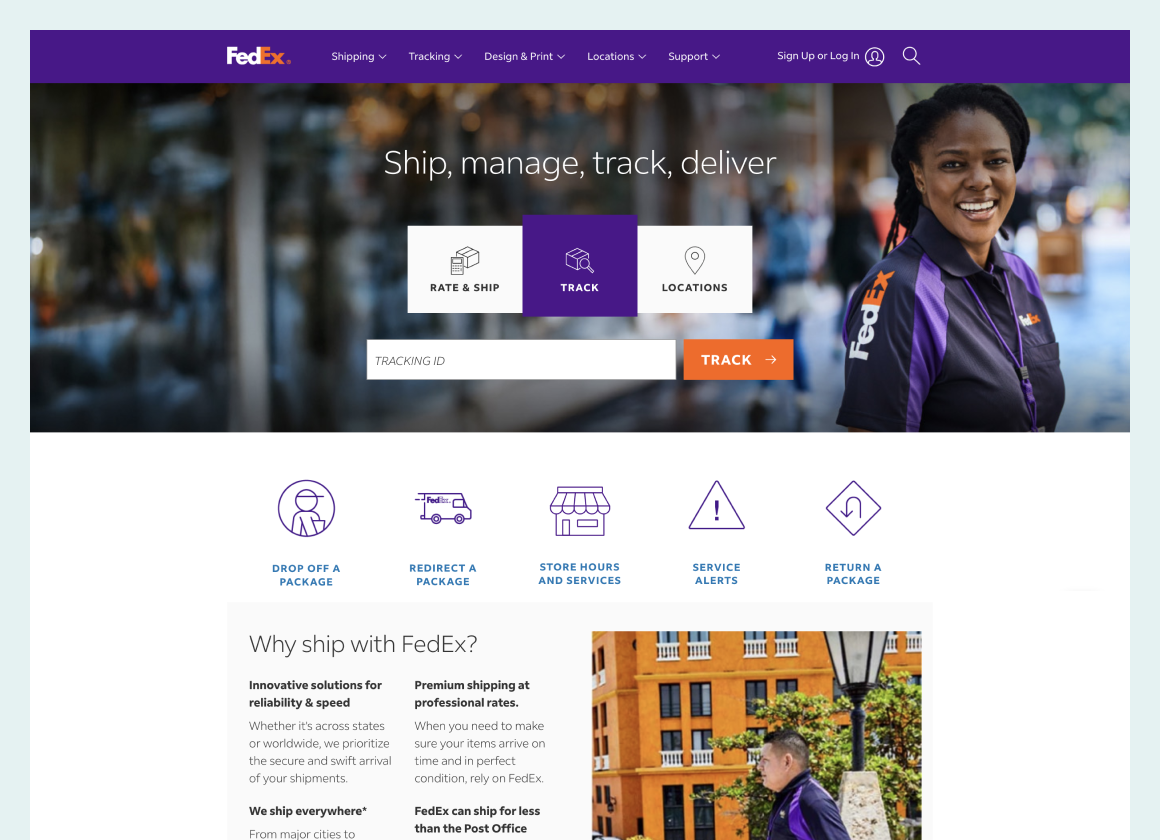
FedEx uses IoT sensors to monitor package conditions in transit, reducing lost or damaged shipments by 25%.
4. Cybersecurity: Locking Down Data Like Fort Knox
Cyber threats are evolving, and businesses can’t afford to cut corners on security. That’s why global cybersecurity spending is expected to hit $200 billion by 2025. (Source) Companies are adopting zero-trust security models and end-to-end encryption to stay ahead of hackers.
Real-world impact:
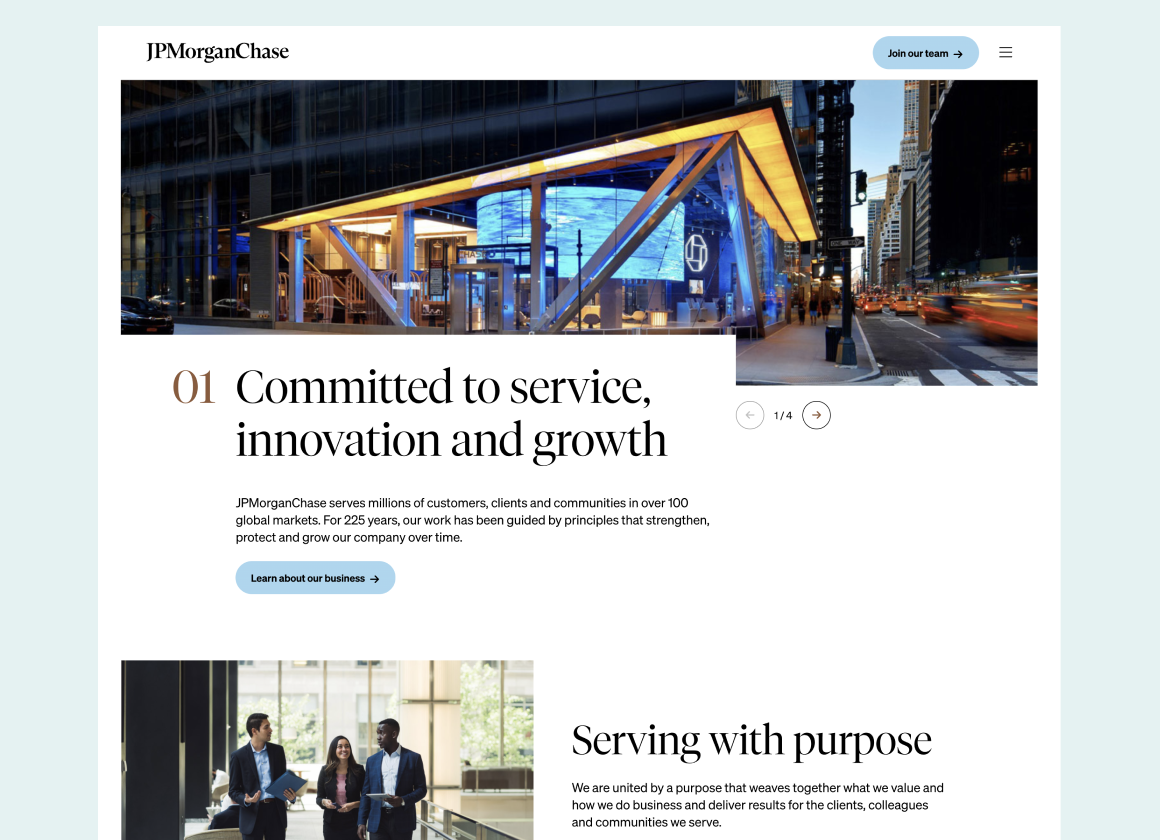
JPMorgan Chase protects customer data with biometric authentication and AI-driven fraud detection.
5. Cross-Platform Development: One App, Multiple Devices
Businesses need apps that work seamlessly across all devices. That’s why 65% of enterprises now use cross-platform frameworks like Flutter and React Native to reduce costs and speed up development.
Real-world impact:
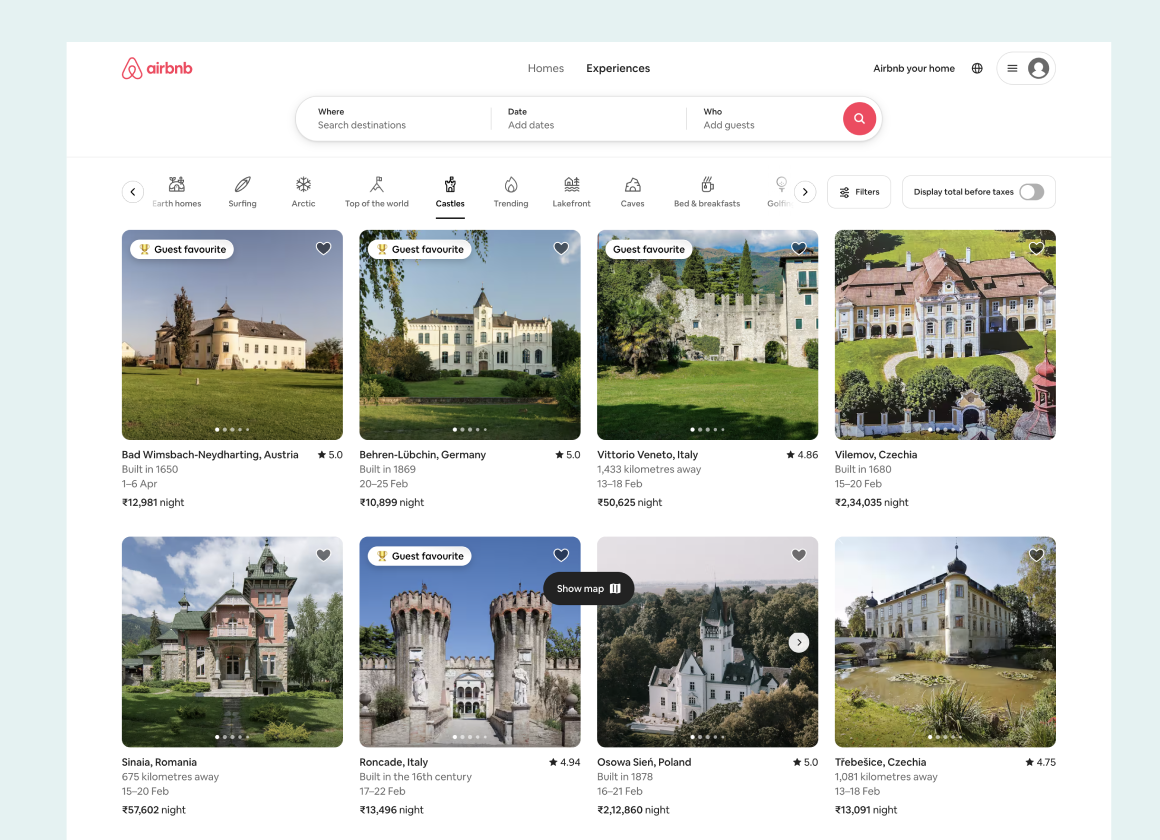
Airbnb relies on React Native to provide a smooth user experience for their app users, both iOS and Android devices.
6. Low-Code/No-Code Development: Apps for Everyone
Not every company has a team of developers, and with low-code and no-code platforms, they don’t need one. These tools let businesses build apps quickly without complex coding. By 2025, 70% of new business applications will be developed using low-code/no-code platforms.
Real-world impact:
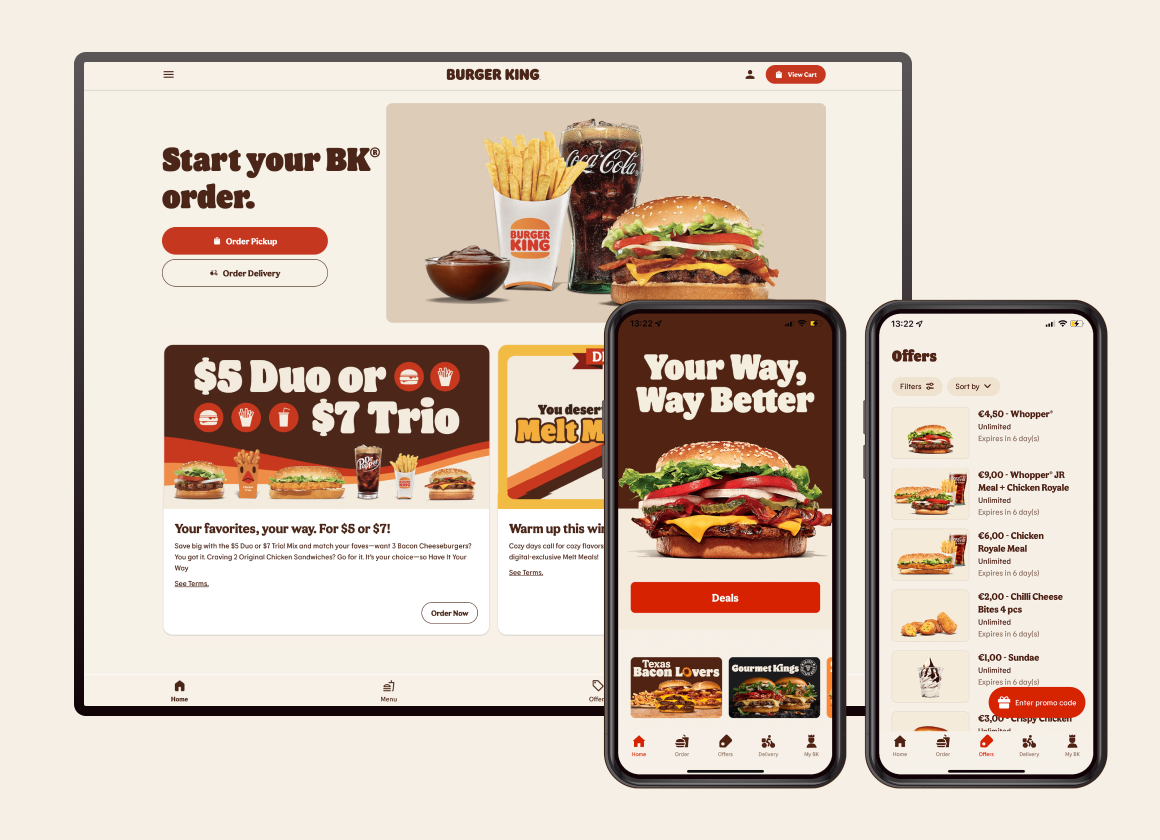
Burger King uses no-code platforms to quickly launch on mobile phones’ internal apps for inventory management and staff scheduling.
Benefits of Staying Ahead of App Development Trends
Tech isn’t slowing down, and neither should you. If you’re not keeping up with the latest app development trends, you’re basically running a race in slow motion while your competitors speed past. Businesses that stay ahead don’t just keep up—they set the pace.
From ditching manual work to creating seamless customer experiences, staying on top of new tech can make all the difference. Let’s break down why it’s important.
Improved Operational Efficiency
Nobody likes spending hours on repetitive, mind-numbing tasks. Thankfully, modern enterprise apps take a lot of that off your plate. AI-powered automation can handle everything from processing invoices to scheduling meetings, letting employees focus on more valuable work. A 2024 study by McKinsey found that businesses using AI-driven automation saw a 30% boost in productivity.
Enhanced Customer Experiences
Today’s customers aren’t just looking for a product; they want an experience that feels tailor-made for them. Businesses that invest in advanced technologies, AI, machine learning, and real-time data analytics can offer personalized recommendations, instant support, and seamless interactions—keeping customers hooked and happy.
Spotify, for example, uses AI to analyze its user preferences and behavior and create personalized playlists, keeping listeners engaged and boosting subscription rates. Ignoring personalization in today’s digital world is like running a store where every customer gets the same generic greeting—boring, forgettable, and easy to walk away from.

Cost Optimization
Keeping up with app development trends isn’t just about looking tech-savvy—it’s about making smart financial decisions. Companies that migrate to cloud-based solutions save up to 35% on IT costs while improving reliability. Instead of maintaining expensive hardware, businesses can scale their operations seamlessly, paying only for what they use.
Plus, with low-code and no-code platforms, businesses can develop apps faster and cheaper. Instead of hiring a full team of developers, companies can build functional mobile applications using drag-and-drop interfaces—cutting costs without sacrificing quality.
Skipping out on cost-effective solutions is like leaving money on the table—and in today’s competitive world, that’s a luxury businesses simply can’t afford.
Competitive Advantage
If you’re not innovating, your competitors sure are. In today’s dog-eat-dog business landscape, companies that adopt the latest app development trends have a serious edge. From AI-driven automation to augmented reality and IoT-powered insights, the right tech can turn a good business into a market leader.
Companies that prioritize digital transformation are 2.5 times more likely to outperform competitors in revenue growth. If you’re an early adopter of groundbreaking tech, you set the pace while others scramble to catch up.
For instance, Tesla leveraged advanced software and AI to revolutionize the auto industry, setting a new standard while traditional automakers played catch-up. Falling behind in tech is like showing up to a marathon in flip-flops—you’re simply not going to win.

How to Get Started with Enterprise App Development
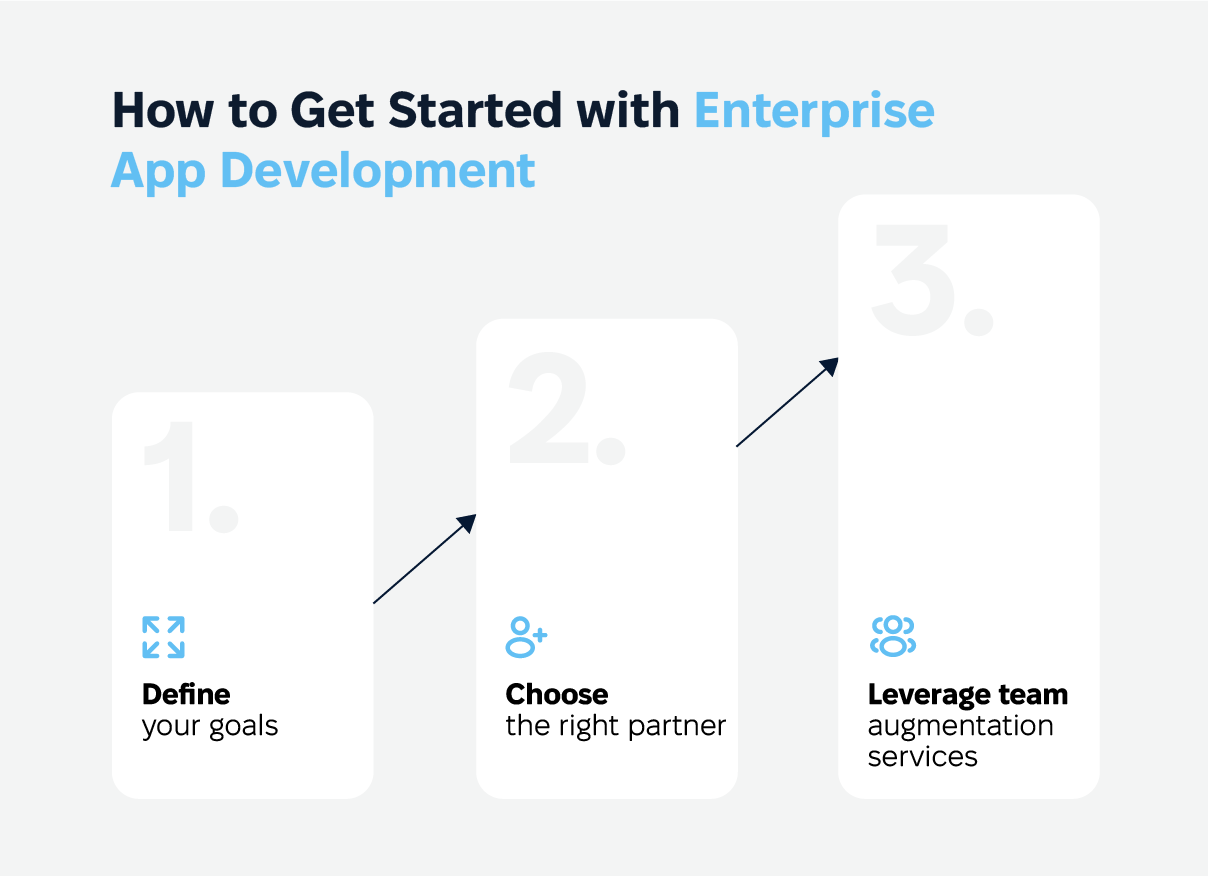
From our experience, successful enterprise app development isn’t just about writing code—it’s about building a solution that fits seamlessly into your business operations. We’ve seen companies waste time and money on poorly planned projects, only to realize later that they missed key requirements. To avoid that, here’s a tried-and-tested approach to getting started the right way.
Step 1: Define Your Business Goals and Requirements
Before jumping into development, take a step back and ask yourself: What problem is this app solving? Are you aiming to automate workflows, improve team collaboration, or simplify data management
Getting crystal clear about on demand apps and your objectives early on shapes the app’s features, usability, and long-term success. Experience shows that companies with well-defined mobile app market strategies see higher adoption rates and fewer costly revisions down the road.
A well-defined goal also helps in aligning stakeholders from day one. We’ve seen projects get derailed because different teams had conflicting expectations—IT wanted seamless integration, while operations needed better reporting tools. By involving key departments early and ensuring everyone is on the same page, you can avoid last-minute changes, delays, and budget overruns.
Step 2: Choose the Right Development Partner
Enterprise apps aren’t just another software project—they need to be scalable, secure, and seamlessly integrated with your existing systems. That’s why picking the right development partner is critical.
Based on our experience, the best teams aren’t just skilled developers; they bring deep industry knowledge, a strong portfolio, and a proven track record of handling complex enterprise solutions. The right partner will not only build your app but also future-proof it for evolving business needs. Choose someone who has expertise and provides create from Scratch service.
Another key factor is technical compatibility. It’s not just about finding a team that can build the app—it’s about ensuring they understand your infrastructure, preferred tech stack, and security requirements. We’ve seen businesses struggle with vendors who lacked experience in their industry, leading to misaligned expectations and endless rework.
A great development partner will act as an extension of your team, offering insights and strategic recommendations rather than just executing tasks.
Step 3: Leverage Team Augmentation Services
Not every project requires a full in-house development team. Sometimes, all you need is extra firepower to accelerate development or fill skill gaps. That’s where team augmentation services come in—they give you access to experienced developers without the overhead of permanent hires.
Beyond cost savings, team augmentation offers flexibility, which is crucial in enterprise app development. We’ve worked with companies that started with a small project only to realize mid-way that they needed extra expertise in AI, cybersecurity, or cloud integration.
Instead of delaying the launch or overloading the existing team, they brought in specialized talent on demand. This agile approach ensures that you can scale up or down as needed without long-term commitments.
Discover Cadabra Studio’s Team Augmentation Service
From what we’ve seen, building an enterprise app is like putting together a high-stakes puzzle—every piece needs to fit perfectly. By setting clear goals, working with the right experts, and scaling your team strategically, you’ll be on the fast track to a powerful, future-ready enterprise solution.
And remember, enterprise app development isn’t a one-and-done project. The best solutions evolve with your business, incorporating new technologies and adapting to changing needs. By choosing a forward-thinking approach, you’re setting your company up for long-term success.
Common Challenges in Enterprise App Development
Building an enterprise app is similar to navigating a maze of technical, financial, and user adoption challenges. From our experience, the most successful projects aren’t just well-built; they’re well-planned, adaptable, and user-centric.
Let’s break down the biggest hurdles and how to tackle them effectively.
Managing Complex Integrations
One of the trickiest parts of enterprise app development is making everything work together seamlessly. Most companies already use multiple software solutions—ERP systems, CRM platforms, cloud services, and custom legacy tools. The challenge? These systems weren’t necessarily built to talk to each other, and forcing them to integrate can feel like trying to fit a square peg into a round hole.
History shows that businesses that rely on outdated infrastructure often face major integration roadblocks, leading to data silos, workflow inefficiencies, and operational bottlenecks. That’s why API-driven integrations, middleware solutions, and microservices architectures have become essential. Instead of ripping out legacy systems entirely (which is expensive and risky), companies can bridge the gap with modern integration strategies.
For example, Walmart, a retail giant, struggled to connect its legacy inventory management system with a modern cloud-based platform. The result? Disjointed data, inaccurate stock levels, and costly inefficiencies. By leveraging API-driven integrations and real-time data processing, Walmart optimized its supply chain, cutting inventory errors by 30% and improving overall efficiency.
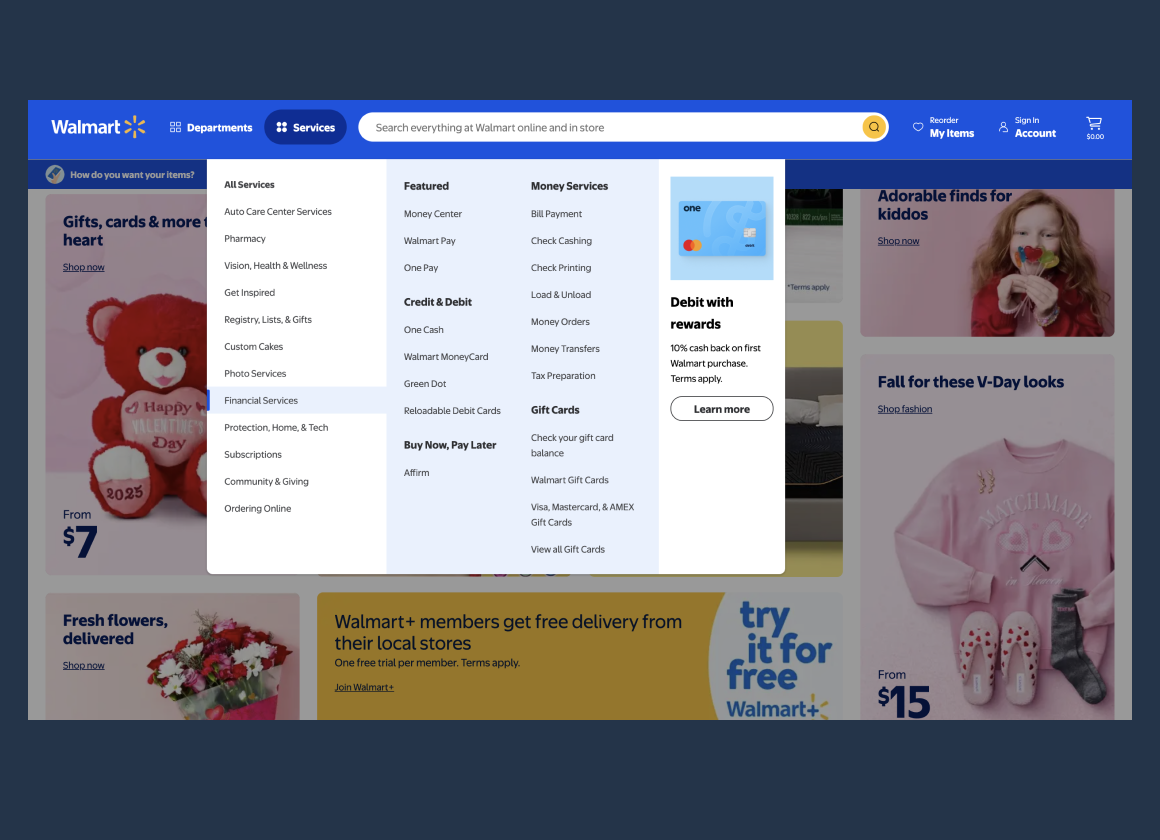
Balancing Cost and Quality
Developing an enterprise app isn’t cheap, and finding the sweet spot between cost and quality is a constant battle. Businesses often face two extremes:
Cutting corners on development—which can lead to security flaws, poor scalability, and frustrating user experiences.
Over-investing in unnecessary features—which drains resources and delays the app’s launch.
From what we’ve seen, scope creep is one of the biggest budget killers in enterprise app development. Many businesses start with a clear plan, but as creative app development often progresses, new ideas and feature requests pile up—pushing deadlines and ballooning costs.
The key to controlling costs? Prioritization. Companies that focus on building a Minimum Viable Product (MVP) first and iterating based on real user feedback tend to see higher ROI and faster adoption. Agile development also plays a huge role, allowing teams to adjust scope, optimize resources, and prevent budget blowouts.
Real-world practice
A 2024 PwC report found that 65% of enterprises exceeded their app development budget due to scope creep and unexpected costs. The most successful companies kept things under control by focusing on core features first, using agile methodologies, and scaling gradually based on user needs.
Ensuring User Adoption
Even the most technically advanced enterprise app can flop if employees or customers don’t want to use it. And from experience, we’ve seen this happen more times than we can count.
The biggest reasons for low adoption?
Complicated workflows that make the app feel like more of a burden than a solution.
Poor user experience (UX) that frustrates employees rather than helps them.
Lack of proper training, leaving users confused and resistant to change.
The best enterprise apps don’t just function well—they feel intuitive. Investing in user-first design, conducting hands-on training, and gathering real feedback from actual users during development can drastically improve adoption rates.
For instance, when General Electric (GE) rolled out a new internal productivity app, employees initially resisted using it due to a clunky, confusing interface. Adoption rates were low, and productivity actually declined. GE tackled this by revamping the UI with a user-first approach, simplifying workflows, and offering hands-on training. Within six months, user adoption increased by 50%, proving that usability is just as important as functionality.
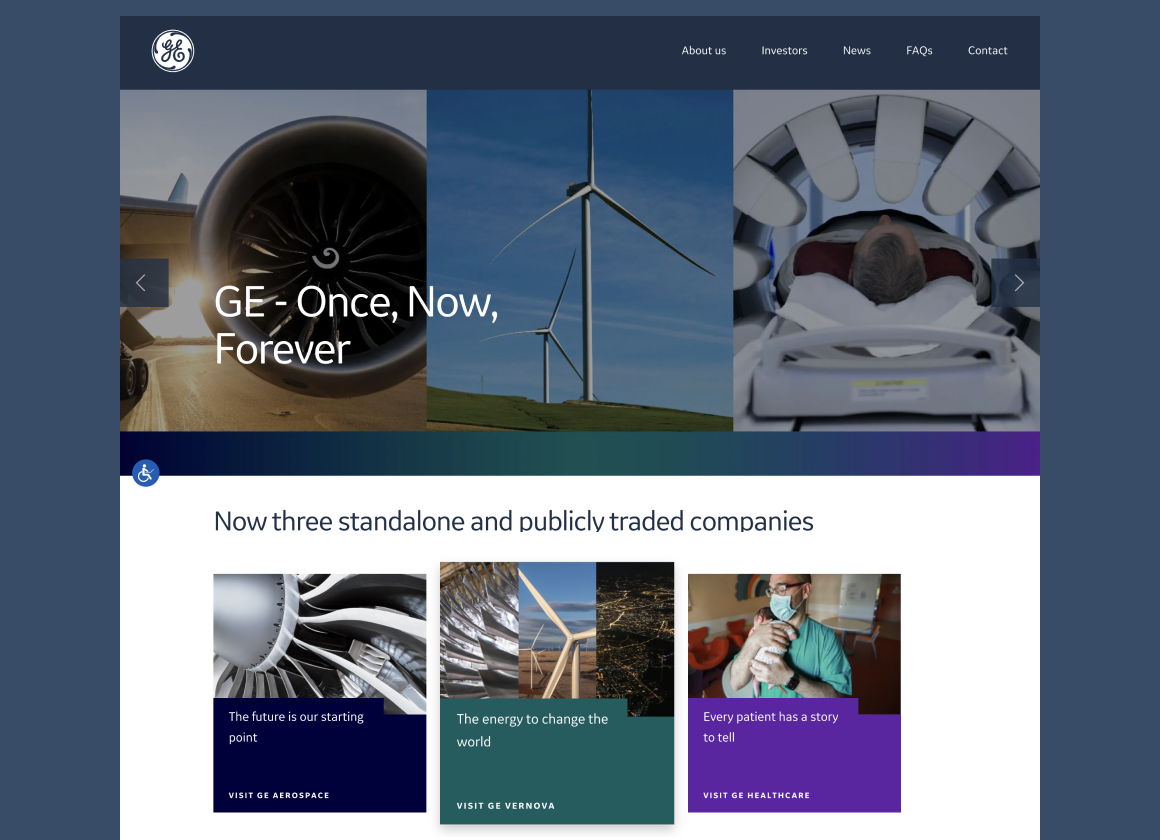
Case Study: Streamlining Workflow Management for a Fortune 500 Company
Assurant, a global leader in risk management, needed a robust enterprise application to optimize internal workflows, manage vast amounts of data, and improve decision-making processes. Their existing system was slow, outdated, and lacked the flexibility required for a rapidly growing business.
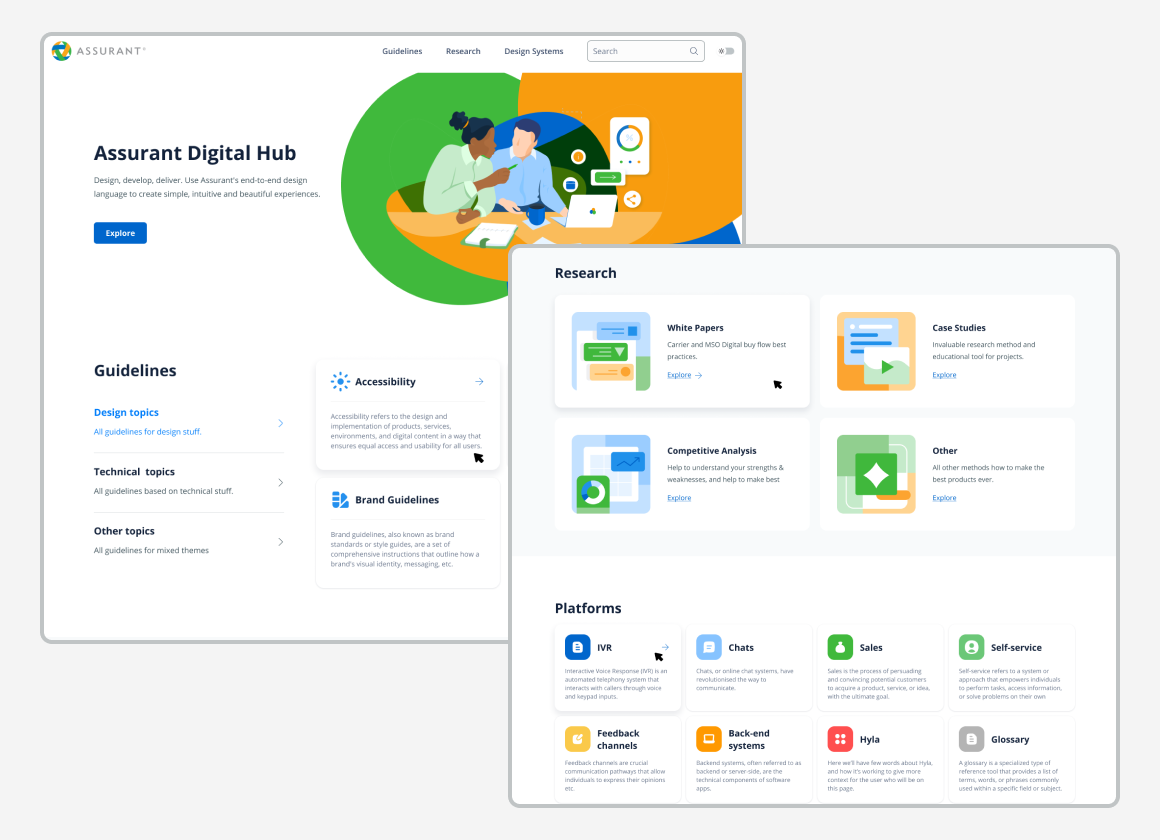
Solution:
We’ve built a custom enterprise app tailored to Assurant’s needs, incorporating:
Advanced data analytics for smarter decision-making.
Automated workflow management to eliminate bottlenecks.
Scalable architecture that allows for future growth and expansion.
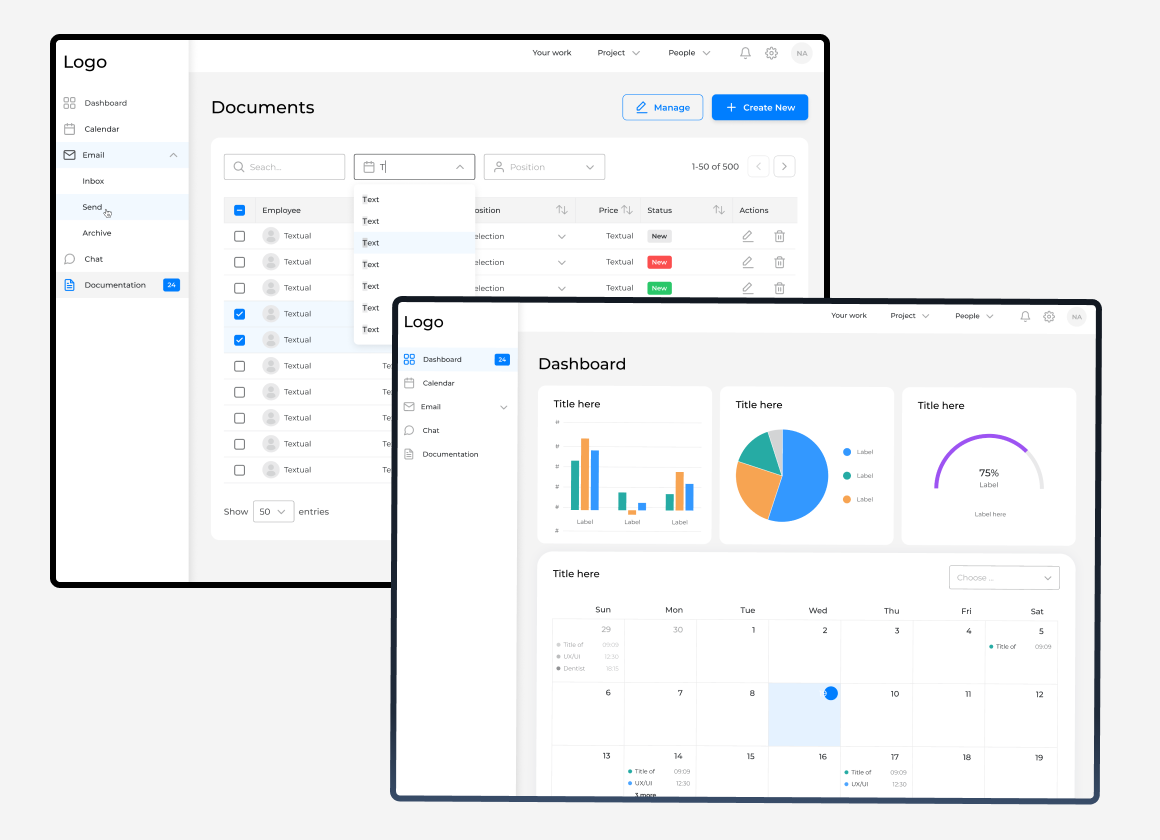
Results:
20% faster internal processes, improving overall efficiency.
Better resource allocation, thanks to real-time analytics.
Seamless system integrations, reducing manual data entry errors.
This case highlights how enterprise apps can be game-changers when designed with scalability, automation, and data-driven decision-making in mind.
Read more on the Assurant Case Study
Final Thoughts on Enterprise App Development
Enterprise software and app development are the backbone of modern businesses. Imagine trying to run a massive company with spreadsheets and endless email chains. It’s like bringing a butter knife to a sword fight. Enterprise apps step in to automate workflows, centralize data, and keep everything running like a well-oiled machine.
Take AI-powered analytics, for example. Instead of sifting through mountains of reports, businesses get real-time insights that help them make smarter, faster decisions. Cloud-based solutions? They let teams collaborate from anywhere, ensuring no one is left out of the loop. And let’s not forget security—because in today’s digital world, one weak link can bring the whole house of cards crashing down.
Overcoming challenges in enterprise mobile app development isn’t about avoiding them—it’s about planning for them. The best enterprise apps are built with:
A solid integration strategy to connect systems smoothly.
A smart budgeting approach to balance cost and quality.
A user-centric design that ensures people actually use the app.
An attention to top mobile app development trends.
From our experience, the companies that invest in the right strategies upfront avoid costly mistakes, speed up mobile application development and get the most out of their enterprise apps. So, whether you’re building from scratch or modernizing an existing system, focusing on these key areas and mobile app development trends will set you up for long-term success.
Looking to build a cutting-edge enterprise mobile app industry? You can hire mobile app developers or a whole team of experts. Let’s talk and explore how we can help transform your business.
FAQs
What are the key features of an enterprise app?
Enterprise apps are designed to be scalable, integrating seamlessly with existing systems while maintaining robust security measures to protect sensitive data. A user-centric design ensures that the app is intuitive and easy to use, promoting higher adoption rates among employees.
How can AI improve enterprise applications?
AI enhances enterprise applications by automating repetitive tasks, providing predictive analytics for better decision-making, and offering personalized user experiences. This leads to increased productivity and efficiency within the organization.
Why is cybersecurity crucial in enterprise app development?
Cybersecurity is vital in enterprise app development to protect sensitive business data from cyber threats. Ensuring compliance with regulations like GDPR and HIPAA is essential to maintain business integrity and avoid costly penalties.
What role does user adoption play in the success of an enterprise app?
User adoption is critical to the success of an enterprise app. Apps with a user-friendly interface and intuitive design encourage employees to use them, leading to improved productivity and streamlined workflows. Proper training and support further enhance adoption rates.
How does cross-platform development impact enterprise apps?
Cross-platform development ensures that enterprise apps work seamlessly across multiple devices, reducing development costs and time. This approach allows businesses to reach a wider audience and provides a consistent user experience across different platforms.

